

Which 360 Camera is Best for Real Estate Virtual Tours (2023)?
If a picture speaks a thousand words, then a 360 photo is the whole book. There is no better way to visualise the internal area of any real estate than with an interactive 360 photo, and now it’s possible for anyone to shoot super-high quality 360 photos for real estate. Virtual tours are becoming an increasingly popular tool for realtors to show off their most impressive listings, but how easy is it to create these VR tours and what camera should you use?
There are now dozens of all-in-one 360 cameras that make shooting 360 photo and video extremely simple, but if you’re not familiar with the product category you may find it hard to choose the right one. Thankfully I’ve used an tested pretty much all 360 cameras and I can tell you now that you only need to choose between two.
The 360 Cameras Most Suitable for Real Estate Virtual Tours (Updated April 2023):
Best Quality: Insta360 1 Inch 360-Edition

Sharpest Images: Ricoh Theta X

1/2 Inch Sensors | 60MP Photos | HDR auto Bracketing | Easy to Use
Cheaper Option: Trisio Lite 2

Why these cameras you ask? They each have specific features that make them excellent for taking photos and a few others that make creating virtual tours easier too. Most other 360 cameras focus heavily on video , which is great, but not really important when creating virtual tours for real estate.
In this post you’ll see example images shot with a variety of cameras; this will allow you to see the quality you can expect from them. You can also improve photo quality if you are proficient at editing.
At the end of this post you’ll see an example shot with a DSLR 360 panorama rig. DSLR panoramic rigs were traditionally how 360 photos were created prior to the all-in-one devices. These rigs are quite expensive, require a lot of shooting and editing time and need specialist software, however the quality is excellent if you get it right.

Can the all-in-one cameras like the Insta360 1 Inch 360 Edition match up to the DSRL panoramic rig in terms of quality? Probably not, but creating a virtual tour with one takes far, far less time and is do-able for anyone who knows how to work a smartphone. Let’s have a look at those comparisons between the different systems, their positives, negatives and total cost.
Insta360 1 Inch 360 Edition

Difficult: Medium
Price : $$$$
Time for Each Panorama: 15 Mins
Equipment Required: Camera, Tripod
Software Required: Adobe Lightroom, Insta360 Studio
Example 360 Photo:
Analysis
The Insta360 1 Inch 360 Edition is only the second all-in-one 360 camera to feature dual 1-Inch sensors, which make it far more suited to photography than other 360 cameras. Not only this, but the Insta360 can shoot DNG RAW images, features an AI photo enhancer and a workflow that’s reasonably simple to pick up.
The 1 Inch 360 Edition can shoot higher resolution 360 images than it’s closest competitor and features a touch screen for easy manual control. This is a very easy to use camera and anyone who has a modern phone should be able to master all its functions.
To get the absolute best quality out of this camera you will need to shoot in the DNG RAW mode with HDR also activated. This will allow you to edit your images in Adobe Lightroom or Photoshop to massively improve dynamic range, colour, contrast and noise.
But if you are not keen on subscribing to those apps, then the Free Insta360 Studio is able to automatically apply these improvements with the Pureshot feature, however you won’t be able to adjust any individual settings.
The image quality is second to none with the Insta360 1-Inch Edition and is pretty much the best you are going to get out of an all-in-one 360 camera right now.
- High Quality 360 Photos
- Easy to Use
- Pureshot Mode
- One Inch Sensors
- Free Software
- High Quality Video
- Can Overheat
What about the Ricoh Theta Z1

Equipment Required: Ricoh Theta Z1 Camera, Tripod
Software Required: Adobe Lightroom
The Ricoh Theta Z1 was for a long time the perfect all in one 360 camera for shooting virtual tours. It also features two 1 inch sensors and can shoot RAW DNG allowing for greater editing potential, Ricoh have even developed a plugin for Lightroom to allow you to stitch and edit in one program. You also also have the option of automatic HDR which requires even less editing but still produces great results.
However compared to the Insta360 1 Inch 360 Edition the Theta Z1 has a poor design with no Micro-SD Card slot, no touch screen and lower resolution images.
It’s certainly true that the Theta Z1 is powerful enough to be used to create very high quality virtual tours, and the results rival that of some DSLR’s. But the camera is fairly old now and you still have to pay a premium price. I’m still including it in this line-up as some people may prefer Ricoh products and I want to be clear that it’s still a decent option.
- Auto HDR Mode
- One Inch Sensors Superior
- Lighroom Plugin
- Lower Resolution than Competitors
- No MicroSD Slot
Ricoh Theta X

Difficult: Easy
Price : $$$
Time for Each Panorama: 2 Mins
Equipment Required: Ricoh Theta X Camera, Tripod
Software Required: None
The Theta X is literally designed to be the perfect workhorse virtual tour camera. It lacks the higher quality sensors of the Z1 but adds so many user friendly options. The large touch screen, MicroSD slot and removable battery make this a very easy to use camera.
The Theta X can shoot very large 60MP images, the highest of any consumer 360 camera. Using the auto HDR mode results in great looking, sharp images that captures a lot of details. The smaller sensors means the images aren’t as attractive as the Z1 however the Theta X can capture more detail, which might be more important in some situations.
The Theta X has been marketed as a high quality virtual tour camera that’s as east to use as your iPhone and for the most part it achieves this.
- Highest Resolution Images
- Very User Friendly
- No Software Required
- Lots of Memory
- Smaller Sensor Size
Trisio Lite 2

Time for Each Panorama: 4 Mins
Equipment Required: Trisio Lite 2, Tripod
Software Required: Trisio App
Example 360 Photos
The Trisio Lite 2 camera is slightly different than the other camera on this list. The camera features just one lens compared to others that include two. The Trisio works by turning on its axis, shooting images as it goes along and then stitching them together automatically.
This ingenious design allows the camera to be cheaper than its competitors while retaining high quality images. The max resolution is 32MP which is enough to capture plenty of details, there is also an auto HDR mode which boosts the dynamic range of your images.
On the downside there is no option for shooting video and very limited photo options too. You won’t have much control over how your images look.
- High Resolution Images
- Cheaper Option
- No Video Mode
- Limited Options
The above options are probably the three to choose from as of 2022. Depending on your budget and why you need to shoot Virtual Tours you could happily use either of these three. For high quality VR tours for larger houses then the Z1 is still the best.
For other professions, like the construction industry for example, or real estate for smaller units, the Theta X is the best option and it’s by far the easiest to use. The budget option is the Tiriso Lite.

Other Options

Time for Each Panorama: 5 Mins
Equipment Required: QooCam 8K, Tripod
Software Required: QooCam Studio, Kandao Raw +, Photoshop/Lightroom
The QooCam 8K is the first consumer 360 camera that can shoot 8K resolution video. While this is impressive it doesn’t help those who want to create virtual tours with 360 photos. Thankfully the QooCam is also a bit of a powerhouse when it comes to shooting photos.
The QooCam 8K can shoot DNG 8 photos with excellent results. This mode stacks 8 DNG photos together to create very high dynamic range images that look great in virtually all types of lighting. This mode will allow you to capture more detail than ever and avoid over exposed light areas.
Working with these file types can be a bit tricky and you’ll need to download a special desktop program to combine all the images together. You may also need a program like Photoshop of Lightroom for the finishing touches, but within a few minutes your 360 images should be ready for uploading to a virtual tour.
The QooCam features larger sensors than most consumer 360 cameras which allows it to capture more detail and avoid blurred images. Compared to the Theta Z1 the QooCam doesn’t match up in terms of hardware but it does have more shooting options and an easier workflow.
Xiaomi Mijia Mi Sphere

Equipment Required: Xiaomi Mijia Mi Sphere Camera, Tripod
Analysis:
The Xiaomi Mijia Mi Sphere is a fairly cheap 360 camera that can shoot impressive 24 megapixel images. The camera has been widely praised for its photo taking abilities which is why it’s one of the two options for shooting real estate virtual tours. The Mi Sphere shoots 360 photos with just the tap of a button and no manual stitching is required.
The above photo was created using three separate images, shot with the bracketing mode feature on the camera. This mode forces the Mi Sphere to shoot a dark, normal and bright image, you then combine them to create an overall superior quality panorama. Unfortunately the camera itself can’t combine the images together, so you’ll need to do this manually with a program like lightroom.
The quality of the image is a downgrade from the DSLR rig and there is some blurriness in the background, but overall it does a decent job and someone who is a better editor than me could easily make this a much more dynamic image, but again this is more editing time. For just over $200 the Mi Sphere is certainly the most cost effective way to create indoor virtual tours.
- Bracketing Option
- High Resolution Image
- Some Blurriness
- Less Dynamic
- Merging of Photos Needs External Software
DSLR Panorama Rig

Difficult: Hard
Price : $$$$$
Time for Each Panorama: 30 mins +
Equipment Required: DSLR, Wide Angel Lens, Tripod, Panoramic Tripod Head
Software Required: Adobe Lightroom, Stitching Program (PTGui)
The quality of the image is undoubted, not to mention the brightness and colour accuracy. DLSR rigs allow you to create such high quality panoramas because the lenses are very good at capturing light and detail. You are also taking 8-10 separate photos and manually stitching them into a single one, which means there is no loss of quality.
Some drawbacks to this, apart from the large amount of time it takes, is that there can be stitching errors visible in the image. You can spot a few here if you look carefully, for example at the bottom of the door. These errors are caused when you haven’t quite lined up two images properly, most of the time they can be fixed but require you to spend more time in editing. If you have a lot of photos to take in your tour, you could find yourself spending hours editing and stitching images together.
To achieve this you’ll need to invest in some software packages, particularly a stitching program such as PTGui. This along with the price of the equipment makes this an expensive as well as time consuming way to shoot real estate virtual tours, but certainly produces the best results. For this shot I used a Samyang Fish Eye Lens , which is actually one of the cheaper fish eye lenses suitable for 360 photography.
- Highest Quality Image
- Not Overexposed or blurred
- Time Intensive
- Requires Skill to Get Right
- Tripod More Visible
- No Video Option
So which 360 camera is the best for real estate virtual tours? It depends what you want to achieve. If you need to absolute best quality then you’ll still need to use a DLSR rig. If you can sacrifice a bit of quality, then the Ricoh Theta V is an excellent option that will save you a huge amount of time. If cost is an issue then the Mi Sphere will do a decent job for a very low price.
If I had to choose, I’d pick the Ricoh Theta V as an excellent compromise between quality, time taken and price. You can get the Theta V from Amazon for around $429 and it can also shoot 4K 360 video.
No matter which camera you choose, the investment will be worth it. I’ve had countless enquiries from real estate agents asking about 360 photo, video and virtual tours and I think it’s going to become a standard part of the industry within the next few years.

See Also: How to Start a Virtual Tour Business

Which is the Best 360 Camera to Take Skiing & Snowboarding

These Are The Best 360 Cameras in 2023: Every Camera Compared
Tags: Real estate Virtual Reality
The 360 Guy
Owner of threesixtycameras.com. Writer, photographer and videographer. You can see my YouTube channel for guides of how to shoot 360 video. I've written for The Times, Digital Photography School and Sunday Express.

How to Get the Invisible Selfie Stick Effect: 2024 Update

Insta360 Camera Comparison Table: Which should you get?

Insta360 Snapshot Editing Guide

5 Things to DOUBLE the quality of your Insta360 Videos
Hey 360guy, sooo looking at the Mi vs the Ricoh, im surprised to see the Mi’s spherical being softer than the Theta?
But if one want to take the next step up. whats the most impressive 1-click spherical files?
What would be the best camara for 360 videos??
I got into real estate 360 virtual tour thanks to you, since I am on the budget I was lucky to get me a Ricoh Theta S (older model) for $150.00, for pictures still good. Now i need more clients to save some bucks to get a better camera that can take 360 videos for indoor low lights and outdoor sports such as biking.
Thanks looking forward to hear from you soon.
Keep the good work.
Which program can I use to make a final virtual tour with Ricoh Theta V?
Stitch with PTGUI and upload to Kuula for simple tour!
Awesome article, thank you for taking the time. I’m getting ready to enter the real estate market in Qualicum Beach, Vancouver Island and want a way to make my future clients listings really stand out. With my technical background and the affordable cost of these 360 cameras it seems like a good move. The Ricoh Theta V seems like a good bet for my needs. Do you have any better recommendations now that this article is several months old?
Hi, what about Matterport camera? What is your opinion? I am interested in buying it. Thanks
I’m looking at the Matterport samples. They allow you to travel/surf through a building or apartment to view the entire building instead of just doing a 360 view. Are the cameras you review on this post able to do the same thing? If so is it a lot more work than if I just purchased a Matterport?
The Ricoh Theta V is discontinued. It appears the SC2 has replaced it. Is the SC2 comparable to the V and would you recommend it for real estate tours?
I’m a big fan of 360 cameras for real estate tours. I’ve tried a few different models and the one I like the best is the Ricoh Theta S. It’s easy to use and has great resolution.
Leave a reply Cancel reply
This site uses Akismet to reduce spam. Learn how your comment data is processed .
ThreeSixty Cameras is the best online resource for buying and using 360 cameras.
ThreeSixty Cameras is a participant in the Amazon Services LLC Associates Program, an affiliate advertising program designed to provide a means for sites to earn advertising fees by advertising and linking to Amazon.com.
Privacy Policy
GDPR & Discalimers

Best 360 camera 2024: the finest choices for capturing every angle
The best 360 cameras for capturing everything around you

- Best overall
- Best stabilization
- Best modular
- Best waterproof
How to choose
- How we test
1. The list in brief 2. Best overall 3. Best stabilization 4. Best 8K 5. Best 3D VR 6. Best modular 7. Best waterproof 8. How to choose 9. How we test
With an increasing number of 360 degree cameras entering the market, it can be a challenge to decide which one is best for you. Most adopt the simple idea of combining two ultra wide-angle lenses back-to-back. The captured footage is then digitally combined into a fully spherical video or, more usefully, into a standard two-dimensional video weaved together from frames that you've chosen after the fact.
The best 360 cameras include features like automatic stitching (which saves you the hassle of manually aligning multiple captures), image stabilization, live-streaming and resolution, which in some cases goes up to 8K . It's also worth looking at cropping functionality, which allows you to extract a standard ‘flat’ video from the 360 degree footage you’ve captured. This means you can shoot everything that’s going on and select your area of focus when you're back home
With many features that go beyond simple 360 degree coverage, it's no wonder comparing like-for-like isn't the easiest. We've curated a list of all the best options, along with reasons to buy and not buy each one. Some are the latest and greatest models, while others are a little older but priced very competitively. And don’t forget that we always display the latest and best deals, too.

Tim is TechRadar's Cameras editor, with over 15 years in the photo video industry and most of those in the world of tech journalism, Tim has developed a deeply technical knowledge and practical experience with all things camera related. Tim notes; "Smartphones may have taken a huge bite out of the point-and-shoot camera market, but 360 degree cameras offer unique photo and video features that help them continue to standout in 2024."
The quick list
If you want a shortcut to the best 360 degree cameras, the round-up below will give you an instant overview of our favorite options. When you find one that fits your requirements, you can use the links beneath each entry to jump down to our full summaries.
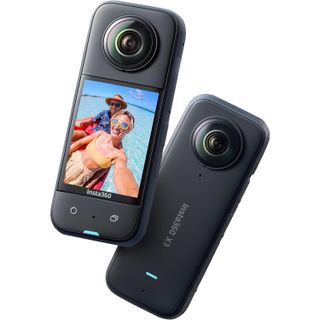
The best 360 degree camera overall
With incredibly 5.7K 360 degree footage, Active HDR for retaining highlights, and great image stabilization, there is no better choice.
Read more below
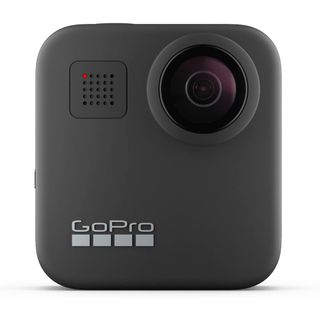
The best 360 degree camera for stabilization
GoPro's superior HyperSmooth stabilization works a treat when capturing fast moving action such as sports and outdoor escapades.

The best 360 degree camera for 8K
Dual 20MP CMOS sensors are paired together to capture incredible 8K video at 30fps and 4K video at up to 200fps. Best in class for resolution.

The best 360 degree camera for 3D VR
Thanks to its hinged design, the Insta360 Evo can capture 3D VR content across an 180 degree field of view. A perfect solution when paired with a VR headset.

The best modular 360 degree camera
Comprised of three individual blocks, the Insta360 One R enables the separation of the battery, controls and the camera itself.

The best waterproof 360 degree camera
With waterproof capabilities down to 5m (16') this is a great option if you're regularly shooting around water.
- ^ Back to the top
The best 360 degree cameras for 2024
Why you can trust TechRadar We spend hours testing every product or service we review, so you can be sure you’re buying the best. Find out more about how we test.
Below you'll find full write-ups for each of the best 360 degree cameras in our list. We've tested each one extensively, so you can be sure that our recommendations can be trusted.
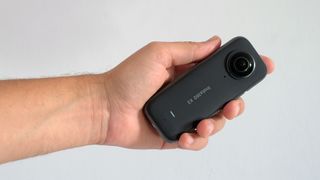
1. Insta360 X3
Our expert review:
Specifications
Reasons to buy, reasons to avoid.
✅ You want a big screen: With a 2.29-inch touchscreen you'll be able to interact with menus and footage easily. ✅ You need high dynamic range: Active HDR mode works its magic at ensuring that all the necessary detail is retained in the highlights and shadows.
❌ You want natural footage: A times, the camera over processes footage and results in an overly synthetic look. ❌ You need ultra-sharpness: 4K videos do appear a little soft which means a lack of overall clarity.
An upgrade to our previous favorite, the Insta360 X3 takes everything great about its predecessor and amps it up a notch. Pocket-friendly yet powerful, it beats the GoPro Max for single-lens 4K clarity, and excels when it comes to shooting 5.7K 360-degree footage. While some processing elements can appear more synthetic than a GoPro, we found its Active HDR mode was brilliant at retaining detail in highlights. The continued effectiveness of FlowState image stabilization also impressed in testing.
We felt its significantly larger 2.29-inch touchscreen made the Insta360 X3 a much easier camera to use handheld, even if there remain a few software quirks to be ironed out. Once you’re familiar with the interface, though, it’s largely a breeze. Insta360’s editing workflow also proved seamless in testing, with diverse and intuitive tools complementing the experience. Our review time revealed the claimed 81-minute battery life to be realistic, too. Add in 10m water resistance – twice that of the GoPro Max – and the Insta360 wins out as the most versatile 360 camera you can buy right now.
Read our in-depth Insta360 X3 review
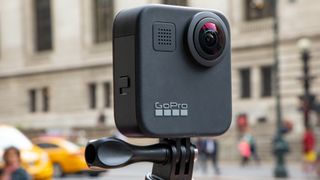
2. GoPro Max
✅ You want video reframing: Editing and reframing tools in the GoPro smartphone app makes it possible to crop footage after shooting. ✅ You need image stabilization: Fast moving action can be stabilized with great in-camera technology.
❌ You are shooting in low-light: The sensor size and technology results in a disappointing level of noise in the shadows. ❌ You need shooting mode variety: The lack of shooting modes is a real limitation that restricts the type of footage that can be captured.
If you're looking to shoot immersive videos of sporting escapades or outdoor adventures, then the GoPro Max is a good alternative to the Insta360 One X2 close. It's waterproof down to five meters without needing a case, and the editing workflow is slick and simple. If you want to turn your 360-degree video into a traditional 2D film – which is one of the main benefits of 360 cams – the app's OverCapture software lets you do this easily, as long as your happy with the final footage being in Full HD.
The Max also amps up many of the features seen on the GoPro's Hero action cams, including superior HyperSmooth stabilization and 360-degree TimeWarp sequences. The slightly sub-par 2D video footage (which is the result of it being converted from a fish-eye images) means the Max falls short of being the ultimate GoPro for both 360 and standard footage. But it's a fantastic option for anyone who wants to shoot action sequences in every direction without the hassle of deciding where to point their action camera, then edit it together quickly later.
Read our in-depth GoPro Max review
The best 360 degree camera for 8k

3. Kandao QooCam 8K
✅ You need high resolution: 8K capabilities allow for maximum flexibility when cropping shots. ✅ You want great slow-mo: Footage can be captured at 120fps using 4K to allow for footage to be slowed down.
❌ You need waterproofing: You'll need to keep this 360 degree camera well away from water. ❌ You want lightweight: At 9.7 oz / 275 g this is far from the lightest option available.
Numbers never tell the whole story, but 8K is a seriously impressive figure in a consumer 360 camera's spec sheet. Qoocam’s 360 heavyweight outguns all of the competition on resolution, with a pair of 20MP CMOS sensors that work together to capture 8K footage at 30fps and 4K video at up to 200fps.
Not only can it create VR-grade video out of the box, but it’s also the first non-pro model from which 360 footage can be cropped down to widescreen format without a big drop in resolution. It packs impressive SuperSteady image stabilization, too, as well as a class-leading 2.4-inch OLED touchscreen for easy control and framing. For both stills and video, dynamic range is excellent, as is color and contrast.
Downsides? There are limited video modes and the partner app is pretty basic, though there’s a handy express mode which downscales footage for mobile editing. There’s also no escaping the relative heft of the Qoocam 8K, or its lack of waterproofing. All the same, provided you can stomach its price tag, its video quality is unrivaled in the 360 market. Once you try 8K, there’s no going back.
Read our in-depth Kandao QooCam 8K review
The best 360 degree camera for 3d vr
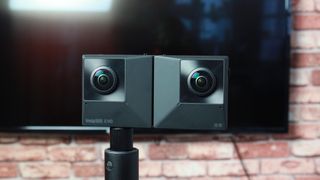
4. Insta360 Evo
✅ You want 3D VR footage: Side-by-side cameras capture VR footage that can be viewed with a VR headset. ✅ You need high dynamic range: Low light performance is far from ideal due to the noise levels.
❌ You want elegant design: With average build quality and larger format this isn't very pocket friendly. ❌ Additional headset required: If you want to view 3D VR footage then you'll also need a VR headset.
It might not have the elegant, pocket-friendly design of Insta360’s One X, but the Evo is a more flexible form of 360-degree camera. One minute it can function as a standard 360-degree camera with back-to-back fisheye lenses, capturing everything around it in decent 5.7K resolution. The next moment, thanks to its hinged design, both lenses will be sitting side by side facing the same direction, allowing them to capture 3D VR content with a 180-degree field-of-view. You’ll really need an Oculus or similar VR headset to appreciate the latter, however – and for most people the One X probably makes more sense.
FlowState Stabilization keeps video shake-free, enabling users to capture footage that’s both smooth and steady. The Insta360 Evo also benefits from high dynamic range capabilities, which make it ideal for shooting scenes that have extreme highlights and shadows. To top it all off, you can create cinematic sequences by slowing down or speeding up footage, all in the Insta360 app.
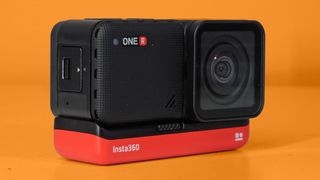
5. Insta360 One R
✅ You want swappable lenses: The modular design allows for both 360 degree shooting as well as 4K wide angle filming. ✅ You want great detail: Image processing results in sharp images, especially during ideal lighting conditions.
❌ You need faultless stitching: Slight abnormalities can occur if your crop covers the border between sources. ❌ You want a big screen: The 1.3-inch square display really limits the viewing of footage and navigating menus.
The headline feature of the Insta360 One R is its modular design. Comprised of three blocks – battery, controls and camera – the lens section can be switched to suit your situation. Besides a 1-inch sensor module, the dual-lens element is seriously exciting: capable of capturing 360-degree footage in 5.7K at 30fps, it transforms the Insta360 One R from action cam to capable 360 cam. Stabilization is excellent, as is the stitching, with only a slight flutter if your crop covers the border between sources. Like the GoPro Max, sharpness drops at the edge of each lens, but results in bright conditions are good, with decent detail and limited noise.
The same can’t be said in low light, where software processing issues arise, with lots of juddering and blurred frames. Editing 360-degree video means selecting and dragging one of five fields of view in the app, which is slightly limiting but ultimately quick, while optional subject-tracking delivers a professional look with minimal effort. It's not quite as slick as the GoPro Max, but it's cheaper, offers a unique modular approach and delivers solid 360-degree footage. With a few software fixes, the Insta360 One R could be a real 360 success.
Read our in-depth Insta360 One R review
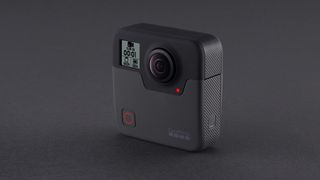
6. GoPro Fusion
✅ You want durability: The rubber casing provides a durable design that is ideal for knocks and scapes. ✅ You want a waterproof solution: At 5m you'll be able to use this 360 degree camera even when there's water around.
❌ You need to live stream: With nothing to support this you'll need to look elsewhere. ❌ You want fast processing: Downloading of video takes an age and really removes the joy out of the creative process.
GoPro’s highly innovative camera has enjoyed a significant price drop since its launch, making it worth considering if you can't stretch to the newer GoPro Max. The Fusion can capture 360-degree video in 5.2K resolution at 30fps (or 3K at 60fps) which is great, but its real trick was the introduction of the OverCapture mode. Like the GoPro Max and Insta360 One X, this lets you film in 360 degrees then create a standard 16:9 video from the footage.
Add GPS, a compass, accelerometer, gyroscope, Wi-Fi, Bluetooth, 3D audio, and compatibility with existing GoPro mounts, and the waterproof (to a depth of 5m) Fusion is a powerful camera for the price. The newer GoPro Max brings a front-facing screen, a more compact design, six microphones (rather than four) and better image stabilization. The Fusion's last software update was also over a year ago, if these issues don't bother you then it's definitely worth considering if you need a waterproof 360-degree camera.
Read our in-depth GoPro Fusion review
How do I choose the best 360 degree camera?
The best 360 cameras come in a range of shapes, sizes and styles. That said, most models work in a similar way: they use multiple camera modules (usually two wide-angle lenses placed back-to-back) to capture footage which can then be digitally combined to create a fully spherical video.
But there are also plenty of differences between the 360 cameras in the list above. Many 360 cameras include features such as automatic stitching (which saves you the hassle of manually aligning multiple captures) and image stabilization for steady shots. The top options, including the Insta360 One X2 and GoPro Max, can also use software trickery to digitally erase compatible hand grips from the frame, so you can record yourself without a big boom arm blocking your shot.
Resolution varies from camera to camera. The highest resolution consumer 360 camera in 2021 is the Kandao QooCam 8K, which can shoot 360 video at 8K. More affordable options like the GoPro Max and Insta360 One X2 shoot at 5.6K and 5.7K resolutions respectively. But it’s important to remember that those numbers refer to the full 360 resolution; if you crop down to a flat frame, the resolution will be much lower (normally 1080p or less).
This cropping functionality allows you to extract a standard ‘flat’ video from the 360-degree footage. This means you can shoot everything that’s going on around you, then select an area of focus when you’re back home. This is particularly useful for fast-moving and unpredictable subjects, such as safari animals or extreme sports enthusiasts.
The relevance of other features, such as GPS, Wi-Fi and slow-mo modes, will depend on what and how you like to record. Many of the best 360 cameras feature creative shooting tools and handy connectivity features, plus smartphone apps which make editing and sharing easier.
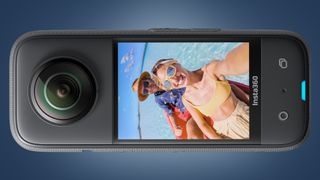
What’s the best 360 camera for virtual tours?
360 cameras are a great choice for shooting immersive virtual tours. Upload 360 images or video to a compatible hosting platform (such as Facebook or CloudPano) and visitors will be able to explore a location in full 360 degrees from the comfort of their home. This is particularly useful for venues such as a hotels and museums, as well as real estate listings.
The right 360 camera for your virtual tour will depend primarily on whether you plan to shoot a video tour or a static photo tour.
It’s possible to create a virtual tour simply by walking around a location while recording video. If this will be your approach, any of the top cameras in the list above should produce smooth, sharp 360-degree footage. The Kandao QooCam 8K in particular can capture detailed 8K video and benefits from SuperSteady stabilization smarts (although file sizes for 8K video are much larger and may be compressed by certain platforms).
Most virtual tours use 360-degree stills shot by a tripod-mounted camera. The best 360 cameras in 2021 can capture sharp, immersive images which are perfect for virtual tours. The Kandao QooCam 8K is again a great option here: it shoots dynamic still images at a resolution of 29.4MP (the highest of any camera in our list), allowing viewers to pan around sharp virtual scenes. It also features a tripod mount on its base for easy positioning.
If you’re looking for a less expensive option, our favorite 360 camera – the Insta360 X3 – is an affordable way to shoot 360 stills for virtual tours. It also features a tripod mount and captures 360 stills at a respectable 18MP.
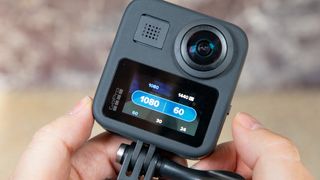
How we test 360 degree cameras
Our reviews are always hands on and actively compare cameras to previous versions or alternative models. We look at various elements, including design, features, performance, and image and video quality.
First up is the camera's design. During this step, we're wanting to get an idea of how the camera handles. Is it small or big, light or heavy, and is that positive or negative for the target audience? We'll put the user interface through its paces and decide how user-friendly and intuitive the workflows are. All of this will be done utilising the built-in touchscreen, which will be assessed for size, quality, and responsiveness.
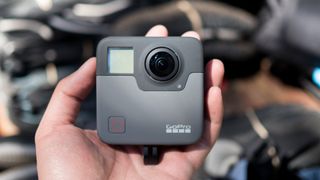
360 degree cameras are well known for having various modes and feature sets that complement the core 360 degree filming functionality. We test all of these features to see how good they are and whether they are usable in a production context. While doing this, we'll use a formatted SD card to capture both video and photos to enable us to comment on the performance as it relates to quality, low-light performance, and battery life.
These types of cameras rely heavily on the use of a companion app, which we also download and test. If the app unlocks specific features or enables a live-feed view, then we'll comment on that too.
After all our testing is complete, we take everything we've learned about the camera and factor in its price to get a sense of the value-for-money it offers before reaching our final verdict.
Get daily insight, inspiration and deals in your inbox
Get the hottest deals available in your inbox plus news, reviews, opinion, analysis and more from the TechRadar team.

Tim is the Cameras editor at TechRadar. He has enjoyed more than 15 years in the photo video industry with most of those in the world of tech journalism. During his time as Deputy Technical Editor with Amateur Photographer, as a freelancer and consequently editor at Tech Radar, Tim has developed a deeply technical knowledge and practical experience with cameras, educating others through news, reviews and features. He’s also worked in video production for Studio 44 with clients including Canon, and volunteers his spare time to consult a non-profit, diverse stories team based in Nairobi. Tim is curious, a keen creative, avid footballer and runner, and moderate flat white drinker who has lived in Kenya and believes we have much to enjoy and learn from each other.
- Paul Hatton Freelance writer
Canon PowerShot concept suggests it's preparing to take on Insta360
Insta360 Flow review: the four in one smartphone accessory
DocuSign unveils new AI-powered ‘Intelligent Agreement Management’ platform
Most Popular
- 2 I’m ready to throw out my iRobot Roomba in favor of Samsung’s new Jet Bot Combo AI robot vacuum
- 3 Your aging Roku TV is about to get a beautiful, free update
- 4 Android phones finally get their first AirTag-style trackers – here's how they work
- 5 Windows 11’s next big update is here – these are the top 5 features introduced with Moment 5
- 2 This new app brings Netflix and Prime Video in 4K with Dolby Atmos to Apple's Vision Pro
- 3 The iPhone 16 may not be much faster than the iPhone 15 Pro, and I couldn’t care less
- 4 Austrian Audio's The Composer headphones are crashing the high-end audio party
The best 360 cameras in 2024: shoot panoramas, 360 video, selfies and more
The best 360 cameras have dropped massively in price, are fun to use and create amazing content for social media

Best 360 camera: our top picks
Best overall, best for simplicity, best for stills, best for sensor size, best action-cam alternative, best budget, best for virtual tours, best for 8k, how we test cameras.
With the best 360 cameras, you can capture images and videos that are quite unlike anything else. You can capture video which can be explored edited down to "flat" 2D or explored in full by dragging on a screen or deep diving using AR glasses. Understanding it fully can be a little technical, but most of the cameras and apps side-step this.
Top Picks 1. Best Overall 2. Best 360 GoPro 3. Best for Stills 4. Best for Sensor Size 5. Best Action-cam alternative 6. Best Budget 7. Best for Virtual Tours 8. Best for 8K How we test cameras FAQs
The files created by 360-degree cameras record the whole scene. They're a bit big and look unwieldy laid flat as 360-degree cameras are nearly always multiple camera images in one, capturing different perspectives that are stitched together in software.
Many cameras will also allow you to identify a flat "slice" of a scene and record only that, and most also offer the tools to pick out a slice retrospectively as you edit into a more traditional framing. Plugins for leading editing programs can do this, or separate apps. This means you have tremendous versatility with a 360-degree camera; it almost doesn't matter where you point it.
If you're feeling lost, already, don't worry – jump to our section on how 360 imaging works , where we've given you the information you need to get your head around the basics.
So, which is the best 360 camera you can buy? We've included all the best options here, including cameras from Insta360 – establishing themselves as leaders in this space – and GoPro (both offer good software, too). We've also got some budget-friendly options from less well-known manufacturers, as it's perfectly possible to capture 360-degree imagery on a budget – as long as you know where to look. And on that note, let's dive in and count off the best 360 cameras you can buy right now.
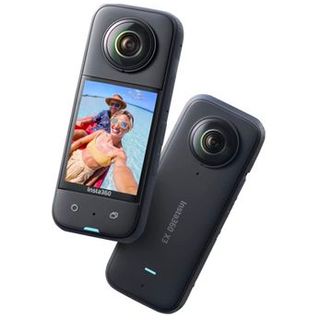
A neatly designed device, easy to transport, with neat phone and desktop software offering extensive creative options, this is camera makes the switch to 360 painless and rewarding. Read more
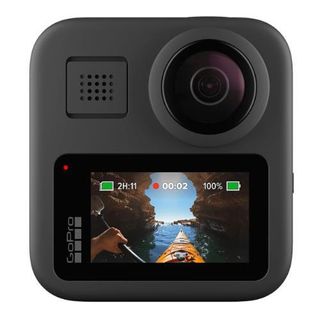
Shoot first, frame later; the GoPro Max 360 camera feels a lot like the future of videography though the software is a bit minimalist. Read more
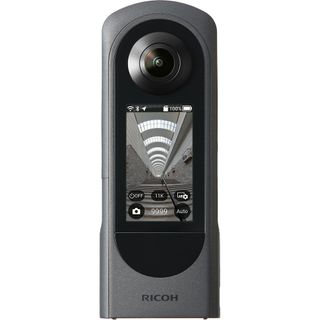
With high-res 60.5MP still images, a 1/2-inch sensor, and 5.7K 360º video, the Ricoh Theta X means business Read more

If you're looking to work in low light, or just need better specs, then this is the more serious contender that you need, backed up by the quality software of Insta360. Read more
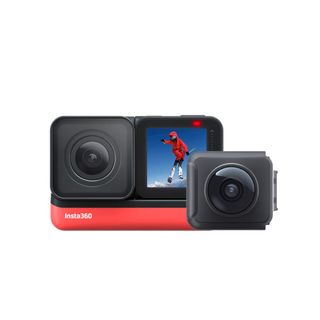
A modular camera which has the option to be assembled like a traditional action camera or a 360-camera depending on your needs, and boasts 4K and image stabilization. Read more
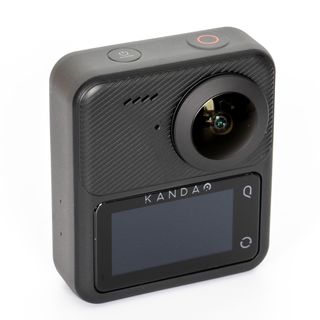
Cheaper than the Insta360 X3 but with arguably better hardware specs, this is a great choice, and the software offers fewer choices but enough possibilities for exploration. Read more
The best 360 camera in 2024
Why you can trust Digital Camera World Our expert reviewers spend hours testing and comparing products and services so you can choose the best for you. Find out how we test.
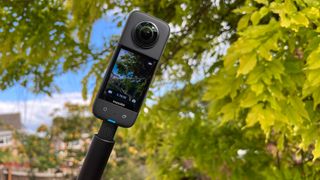
1. Insta360 X3
Our expert review:
Specifications
Reasons to buy, reasons to avoid.
The Insta360 X3 is the ultimate immersive and versatile video camera. It very literally captures everything around you, enabling you to create 3D VR content easily or use its software-based reframing tools to edit your scenes as regular ‘flat’ video, where you can track subjects, create panning shots, and basically point the camera where you like AFTER you’ve shot your video.
Having said that, and despite all its great new features, the Insta360 X3 does feel like an evolution of the concept rather than a giant leap forward. For us, that’s only likely to come with 12K capture and the ability to reframe and export 4K movies. Most of the time, though, 360 is more about action than ultra-resolution (which might prove challenging to process for most).
In that regard, the X3 is still just about the best, friendliest, and most exciting 360 camera on the market, and the software tools on phone, Mac & PC (as well as plugins for the likes of FCPX) have come a long way. We tried the X3 on a real vacation successfully, and another benefit of this camera's dominance is the range of accessories, including dive cases and more.
Read our full Insta360 X3 review
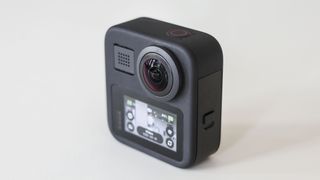
2. GoPro Max
This 360-degree action camera is a great piece of hardware. The image and video quality of the GoPro Max are good enough that they could get it here by themselves, but the GoPro Max also offers a swathe of intuitive features that mean pretty much anyone gets loads out of it, even if they have little interest in 360-degree imaging.
The smooth app lets you edit clips from 360 footage pretty much seamlessly, meaning you can get great images no matter where the camera is pointed, and swap effortlessly between them. As we noted in our full review, the Max also has impressive specs elsewhere – with a six-mic setup, it's a highly credible vlogging camera, and the 1600mAh battery means you'll have enough charge for a day's shooting.
It's a fairly pricey option and lacks a dedicated 4K video capture that you'll find on some rivals like those from Insta360. However, the Max just has that GoPro polish that makes it the best 360-degree camera experience you can buy right now – sadly the software hasn't received much attention since launch.
Read our full GoPro Max review for more details
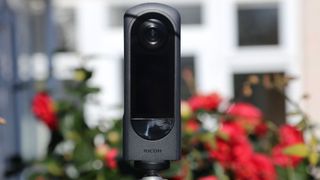
3. Ricoh Theta X
Whether the Ricoh Theta X is going to appeal to you will depend on what kind of content creator you are. If you're looking at this 360° camera as an alternative to a GoPro action camera, then bear in mind that its image stabilization – despite working on higher resolutions than on a GoPro – just isn’t as good. Vloggers should also look at the Theta X with suspicion purely because you can’t use an external microphone with it.
So who is the Theta X actually for? With so many built-in and convenient features we’re sure the Theta X will be a good purchase for anyone after an easy-to-use, versatile, and high-quality 360º camera, though at this high price, it’s a serious investment.
However, we think photographers looking for a 360° camera with core quality will love the Theta X. When combined with its excellent coloring and low-light abilities the Theta X’s ability to shoot stills in 11K resolution lifts it above the competition, but its lack of RAW capture slightly undermines that option.
Read our full Ricoh Theta X review for more details
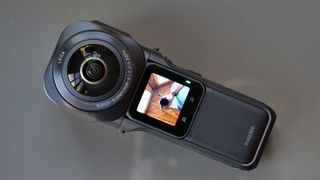
4. Insta360 ONE RS 1-inch 360 Edition
The Insta360 ONE RS 1-inch 360 edition is aimed at the serious filmmaker who is after the best image quality and low-light performance. It might be twice the price of the regular Insta360 One X2 but we think considering how much better it is in terms of low-light performance, dynamic range, and clarity it's definitely worth it.
As we noted in our hands-on review, It feels very well made, uses a 6-gyro FlowState stabilization for super-smooth video, and has a touchscreen which is great for previewing footage but not so easy to use if you have big hands. It's considerably cheaper than the Ricoh Theta Z1 and offers a big step-up in quality so perfect for those needing really professional-looking content.
Read our hands-on Insta360 ONE RS 1-inch 360 Edition review for more details
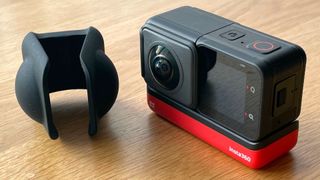
5. Insta360 ONE RS Twin Edition
Unique in the market, the ONE RS is designed to appeal to anyone who would normally consider a GoPro yet yearns to at least have a go at 360º.
The fact that its 360º lens is unchanged from the first-gen version does indicate that the format has settled in as a nice option for occasional use but one that lacks much more development, which chimes with us. That lens does allow a lot of creative options and we love how the Insta360 app provides templates to create natty 360º sequences from clips, but most users will rely on its 4K Boost Lens.
This is more capable than the first-gen version, but we’re not convinced how useful the 6K widescreen feature really is. Much more useful is the ability to record in great-looking 4K, which was always pin-sharp and ultra-smooth.
Read our full Insta360 ONE RS Twin Edition review for more details

6. Kandao QooCam 3
I'm still working on our full review as I update this guide, but it's safe to say that this new camera, which I've already tried, will be in it. Boasting dual 1/1.55-inch sensors with ƒ1.6 aperture it collects a good amount of light and not only captures good-looking 5.7K video but up to 62-megapixelTh stills.
It looks and feels good, and can be held on a selfie stick for vlogging or capturing immersive panoramas. Hardware quality extends inside too – the image sensors are bigger than the leading Insta 360 X3 and there are no issues like early overheating.
Pricing, too, is very appealing compared to the leading brands, though we've not had time to be sure whether Kandao 's new software suite quite matches up to the others. There have been blips in the company's 360 progress, but it is on a good trajectory and it also owns a good chunk of the 360-degree conference room camera market so should not be discounted.
An interesting note for the future is that at CES 2024 Kandao showed the QooCam 3 Ultra , an 8Kcamera with a similar looking but bigger housing. This suggests a decent level of confidence in the series.

7. Trisio Lite2
Designed for businesses that have a need to produce a lot of static virtual tours, the Trisio Lite2 is a very simple device that’s incredibly easy to use. Its 360º photos are excellent and easily good enough for use on virtual tours and for showing off event spaces and hotel rooms online.
The 8K boast is less impressive than its ability with HDR, which helps create vibrant and dynamic spherical images that excel in high contrast environments, but also in low light.
It’s no 360º action camera, with VR-style video off the table. Patience is required, too, since it takes the Trisio Lite2 30 seconds just to light-meter and take a single 360º photo. However, used slowly and carefully the Trisio Lite2 is one of the most limited, and yet the most capable, 360º cameras around that does one thing very well indeed.
Read our full Trisio Lite2 review for more details

8. Kandao QooCam 8K 360
The QooCam 8K is the best 360 camera right now for image quality. A massive (by 360 standards) 1/1.7-inch CMOS sensor, 10-bit color, and, of course, that 8K resolution make sure of that. When it comes to the quality of its photos and videos, the QooCam 8K is peerless in the 360º market. Photos have plenty of colors and contrast like nothing we’ve seen before from a camera like this.
The ability to spit out a great-looking photo from a 360º video is welcome, while the detail, sharpness, and smoothness of video – whether in 360º or cut down to widescreen – itself makes the QooCam 8K a giant leap forward for creative filmmakers. We did list some negative points in our review, most notably that it does have an audible fan, however, the battery life isn't great and it's not waterproof without a housing. It was also pretty expensive, and we'd suggest that this probably isn't the right device to buy if you can wait until the QooCam 3 Ultra (see QooCam 3) starts shipping.
Read our full Kandao QooCam 8K 360 camera review for more details
How we test 360-degree cameras
We test cameras both in real-world shooting scenarios and in carefully controlled lab conditions. Our lab tests measure resolution, dynamic range, and signal-to-noise ratio.
Resolution is measured using ISO resolution charts and quoted in line widths/picture height, which is independent of sensor size. Dynamic range is measured using DxO Analyzer test equipment and the results are expressed as EV values. DxO Analyzer is also used for noise analysis across the camera's ISO range, with results quoted as a signal-to-noise ratio. We typically choose three competing cameras to offer a performance comparison and some context.
More importantly, we get out there in the world and shoot some 360-degree video. This gives us the opportunity to experience the stitching – do the lenses line up and create a spherical view, or are there lens problems? Is it easy to manipulate the preview?
It is also the only way to experience a type of cameras which depend, as 360-degree photography does, so heavily on software to offer the best feature set. Effects which might seem a novelty can actually be the basis of great social video (not to mention the beginning of a whole world of goggles-friendly AR content.
We also test significant accessories – for example 360-degree cameras require special cases for underwater photography, so we did a full real-world review on the Insta360 X3 Insvisible Dive Case .
How 360 imaging works
When visualizing how 360-degree images are captured, imagine someone photographing a sphere from the inside, making sure they get every contour of its inner surface. That’s essentially what 360-degree cameras do – place you in the centre of a sphere, and use extremely wide-angle lenses to capture everything around that point.
The sensors are ordinary ‘flat’ types, but the key is in the lenses, which are extreme fisheyes capable of capturing a 180-degree view, placed back to back. This captures two hemispherical images, which are then merged to produce the final 360-degree image. A viewer can then explore this image with a mouse, touchpad, touchscreen, or VR headset , depending on how they’re viewing the image.
Taking 360-degree videos is, naturally, more complex than stills, as the action all around the viewer will continue even if they’re not looking at the portion of the image where it’s happening. As streaming platforms get more sophisticated, live 360-degree broadcasts are also becoming more common, which is an unparalleled way to immerse yourself in an unfolding event (short of, y’know, actually being there).
Editing 360-degree imagery can be a daunting task, though it is possible to divide them up into smaller ‘windows’ to handle individually, giving yourself a bit more control. In stills, you can crop out one of these windows entirely and export it as a ‘flat’ image. In the video, this flexibility allows you to essentially simulate camera movements like tracking, panning, and zooming, even though your shot was captured from a fixed position. Handy!
There is one thing to be aware of when dealing with 360-degree imagery, which specifically is resolution. As the surface area of a 360 image is much larger than a conventional one, 12MP on a 360-degree camera means something pretty different than 12MP does on a DSLR, and you can’t crop in as close expecting the same level of detail.
Get the Digital Camera World Newsletter
The best camera deals, reviews, product advice, and unmissable photography news, direct to your inbox!

With over 20 years of expertise as a tech journalist, Adam brings a wealth of knowledge across a vast number of product categories, including timelapse cameras, home security cameras, NVR cameras, photography books, webcams, 3D printers and 3D scanners, borescopes, radar detectors… and, above all, drones.
Adam is our resident expert on all aspects of camera drones and drone photography, from buying guides on the best choices for aerial photographers of all ability levels to the latest rules and regulations on piloting drones.
He is the author of a number of books including The Complete Guide to Drones , The Smart Smart Home Handbook , 101 Tips for DSLR Video and The Drone Pilot's Handbook .
- Sebastian Oakley Ecommerce Editor
- Jamie Carter Astrophotography expert
Related articles

Pocket-lint
Best 360 cameras: capture everything with these amazing cameras.
360 cameras are incredible tools for capturing action, motorsport, real estate photography and virtual tours. Here are our tried-and-tested picks.
360 cameras are gaining popularity, and it's no surprise, they are some of the most versatile filmmaking and photographic tools that money can buy.
Whether you're looking to capture epic action shots with an invisible selfie stick or create virtual tours for a real estate business, 360 is the way to go. What's more, you can even relive moments in VR , if that's your kind of thing.
There is a wide range of capable cameras available at wildly different budgets. Each has its own appeal, so the choice really comes down to what you want to spend and what you want the camera for. Something small you can slip in your pocket, take on a jaunt, or an action camera that can survive being dropped, bashed and used underwater?
Take a look at our list of the best 360 cameras available, whatever your budget is.
Insta360 X3
Insta360 one rs, insta360 one rs 1-inch 360 edition, ricoh theta sc2, our top picks:.
Insta360 is the brand to beat when it comes to 360 cameras, and the X3 is its most refined, feature packed and easy-to-use option to date.
- Class-leading software
- Great video and photo fidelity
- Improved low light and UI
- Not a huge leap in video performance over the One X2
The Insta360 X3 is extremely easy to recommend. A combination of a practical form factor, superb software and a much-improved user interface makes it a great starting point for just about anyone.
It has massively improved photo capabilities compared to its predecessor, and video fidelity is up there with the best options on the market. It's waterproof and rugged, making it an ideal companion for your next adventure.
GoPro does action cameras better than anyone, and it turns out to be pretty good at 360-degree video too. The Max is a beastly option.
- The user-friendly video editing system
- Waterproof and durable build
- Excellent footage results
- Touchscreen so that you can see what you're capturing
- One of the more expensive 360 camera options
The GoPro Max has been around for a while now, but that doesn't mean that it's outdated. GoPro's imaging expertise means that the video and photo quality is still up there with the best of them.
As you might expect from the brand, it features hardy construction and waterproofing, too. This model can withstand submersion at up to 16 feet, making it a great option for watersport filming.
The Insta360 One RS manages to pull off being a jack of all trades without much in the way of compromise.
- A multitude of capture modes and footage options
- Easy to use free editing software
- Swappable lenses and mounting options
- The 360-module itself hasn't seen any upgrades
The Insta360 One RS improves further on the modular marvel that is the One R. The 360 module itself remains unchanged, which is no bad thing, as it was already superb. However, the new model adds an additional microphone, a beefier battery pack and faster Wi-Fi connectivity.
If you can't decide between an action camera and a 360 camera, the Insta360 One RS is the model for you. It gives you the best of both worlds at a reasonable price, without compromising on quality.
The Insta360 One RS 1-inch 360 edition is a more premium offering, co-engineered with Leica, but still maintaining compatibility with Insta360's modular system.
- Excellent low light performance
- Sharper video with better colours
- Clever use of the modular system
- The microSD card is hard to access
When it comes to low-light performance, the 1-Inch 360 Edition takes things to the next level. The results are dramatically better than the standard One RS 360 module, and that's the main draw of this new version.
With the higher price point, it's a bit of a niche camera. However, if you're shooting anything commercially, especially real estate and virtual tours, then the upgraded image quality is well worth the price of admission.
Coming in at just under $300, the Ricoh Theta SC2 is one of the most accessible ways to get into 360 video.
- Excellent 360 stills
- Stylish lightweight design
- 14GB built-in storage
- Software isn't great
- No proper screen
The Ricoh Theta SC2 has a slim and lightweight design that makes it easy to carry with you, and it's available in a range of colours to match your personal tastes.
We'd say it's not quite on Insta360's level when it comes to video features or software, but if you want to take some excellent 360 photos without breaking the bank, the Ricoh Theta SC2 is well worth looking into.
How we chose the best 360 cameras
We've spent countless hours shooting 360 videos and photos using the cameras on this list, and we try to factor in as many aspects as possible when adding a product to our recommendations.
This includes things like build quality and durability, as well as image fidelity and software features. There are many ways to use a 360 camera, so there's not a singular solution that will be the best for everyone. With this in mind, we've featured options that are video-focused, as well as cameras with a more photographic slant and even low-light performers.
Here at Pocket-lint, we focus on consumer goods, so we haven't delved into the world of massive professional 360 imaging machines, instead, everything you see here is beginner-friendly and portable, as well as remaining relatively affordable.
How to decide on a 360 camera
With such a variety of cameras to choose from, it can be hard to narrow down your choices and find the best 360 camera for you. If you're having trouble deciding, we recommend asking yourself a few questions to help hone in on the right camera.
How will you use a 360 camera?
When you decided to get a 360 camera, what was it that drew you in? Do you like the idea of shooting first and framing later? Is it the invisible selfie stick for videos? Or do you need to create virtual tours and 360 photos for work?
Thinking about how will use the camera should help you narrow down your options. If it's mainly going to be used for still images, then you'll want to pay more attention to the image resolution and dynamic range than things like frame rates and stabilisation, for example. On the flip side, if you'll be filming action sports then stabilisation and robust construction will be high on your list of priorities.
Where will you use a 360 camera?
Now that you've thought about how you're using it, next you should think about where it will be used. For example, if you want a 360 camera for a skiing holiday, then you'll want some level of water resistance, as well as assurance that it'll work in cold temperatures.
If you'll be using it to shoot home interiors, then you'll care more about how it handles dynamic range and low-light shooting.
How will people view your content?
Finally, it's worth thinking about how your content will be delivered. If you're shooting for YouTube and Instagram, then you'll be reframing your 360 footage into traditional video, so you'll want a camera that has great software that allows you to do this with ease.
If you'll be uploading to a 360 photo viewer, or sharing your content as an immersive VR experience, then you'll want to do your research and make sure that your chosen camera is compatible with the relevant applications that you wish to use. We tend to find that opting for a more popular model can be helpful, as you'll find a lot more tutorials and guides that are aimed at users of that specific camera.
Easy to Use Virtual Tour Software

THE BEST 360 CAMERAS FOR VIRTUAL TOURS
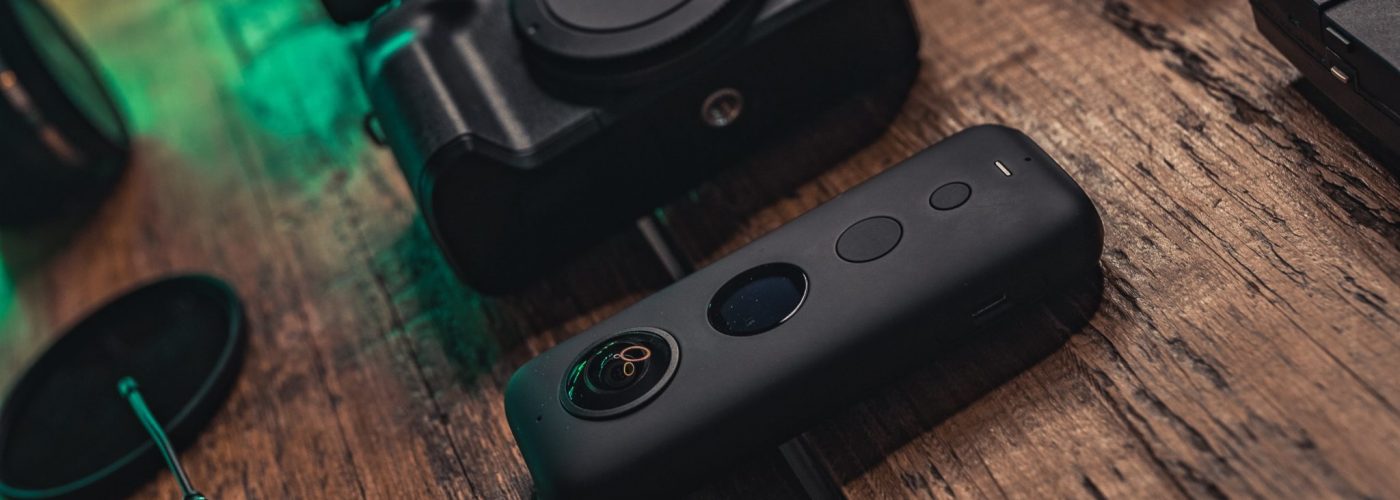
The best 360 degrees cameras for virtual tours are designed to capture the entire scenery surrounding it. At one time, they were hot products, and even till now, they remain a must-have for many virtual home tours creators with a wide variety of models. Additionally, many trendy smartphones manufacturers have featured them in smartphones. In recent times, the hype about 360-degree cameras has slightly waned. Nonetheless, you can still find various quality options to create great virtual tours.
Initially, the focus was more on the gaming niche rather than media use; it prioritized producing spherical videos that can be viewed on VR headsets. In recent years, the 360-degree camera allowed creators to take shots that would ordinarily not be possible with a single-lens camera. It can be captured with 16:9 footage with reframed dual lens. If you’re ready for your real estate virtual tour, there are a variety of quality 360-degree cameras available. However the plethora of 360-degree cameras, it can be challenging to choose the right one for you. So we’ve created a list of the best 360 cameras for virtual tours; check them out! Once you do have your camera you can create virtual tours easily and for free on threesixty.tours .
The Top Cameras for panoramic Images
The GoPro Max 360 degree camera is niche focused camera that helps to facilitate your workflow. Compared to last year’s Fusion, the GoProMax makes you approach your project more easily. Although the GoPro Max has some advanced technology, it is essentially a 360 camera that anyone can operate. The biggest feature is that it’s also a working action camera, equipped with waterproofing and a robust casing specifically designed for use in severe conditions.
The GoPro Max’s video and image capture are exceptional. It can function as a multipurpose vlogging camera thanks to the high-quality microphones. Although it lacks a 4K standard capture, most people will still benefit from the many features it offers.
Price : $499 at Amazon
- Dimensions: 64 x 69 x 40mm
- Weight: 163g
- Waterproof: 5m
- Stills resolution: 16.6MP
- Video resolution: 6K/5.6K
- Memory: MicroSD
- Battery: 5.6K
- Multi-functionality camera
- Produces lively, well-looking videos.
- Offers excellent app experience
- The traditional 4K video capture is not available
- There is no editing software for PCs
- The app experience may need to be improved.

Insta360 One X2
Insta360 One X2 is a convertible camera with a dual lens. It features 5.7K HEVC video recording and allows you to stitch videos automatically. You can use the Insta360 One X2 for up to 33-foot dives as it’s waterproof. Its bullet-time functionality comes in handy for people who create Matrix-style videos.
The One X2 is an incredibly impressive action camera that uses its 360-degree lenses for virtual tours as well as a variety of creative editing modes. It consistently produces stunning videos and photos. Although It requires time and dedication to understand, the One X2 is a must-have for content creators looking to explore other options.
Price : $469.99 at Amazon
- Weight: 149g
- Dimensions: 462x113x29.8mm
- Waterproof: 10m
- Stills resolution: 18.5MP
- Video resolution: 5.7K
- Battery life: 80 minutes
- Produces vibrant, dynamic videos.
- Offers unlimited creativeness,
- Promotes simple AI editing
- Offers “SteadyCam” and “MultiView” functionalities.
- Provides actual color and accurate detail.
- Requires the using updated phones
- Editing can be time-consuming
The convertible-designed Vuze XR camera features lenses great for making spherical 360-degree videos. You can shoot videos in 180-degree footage and view them in VR goggles. However, to be able to shoot with a full-quality display, stitching software is required. The Vuze XR is basically two cameras for the price of one, as it is designed to create 360-degree and 180-degree photographs while making videos simple and intuitive. You can toggle between 360-degree (2D) and 180-degree (3D) modes with one single button and record half-sphere or full-sphere VR film as desired.
Image stitching and live streaming are also possible with the XR, as you expand your creative possibilities even further. Plus, there’s an available smartphone app that helps you track and manage your virtual tour. It’s great for casual day-to-day use because of the inbuilt hand grip, but it’s not a waterproof camera. The Vuze XR is a wonderful tool for 360-degree photography, with a stylish design and remarkable filming alongside, although it may be a little clunky and offbeat for general consumers.
Price: $1,012.42 on Amazon
- Weight: 212g
- Dimensions: 152 x 56 x 39mm
- Stills resolution: 18MP
- Battery life: 60mins
- You can easily switch between modes quickly.
- The video quality is outstanding.
- The battery life is average.
- The app has a simple interface.
Ricoh Theta Z1
The old Ricoh Theta Z1 was introduced and launched in 2019- a period when a 360-degree camera was still considered innovative to many people. Little has changed ever since, with the exception of a recently released slightly redesigned version with 51GB of storage instead of the very limited 19GB of the first model. Before buying this camera, make sure you know which one you’re ordering. The Ricoh Theta Z1 is quite pricey but offers excellent options for image creators.
The 360-degree camera offers bright 23-megapixel photos; it has dual lenses supported with the big 1-inch sensor size. With the high price, you’d expect the Ricoh Theta Z1 to deliver remarkably high 360-degree footage. Its lenses are a little bigger than those available on most cameras of this type, which enhances dynamic range. It isn’t as versatile as other cameras on this list, as it lacks a waterproofing feature; however, it has a sleek design and is easy to handle.
Price: $1,046 at Amazon
- Weight: 182g
- Dimensions: 48 × 132.5 × 29.7mm
- Stills resolution: 23MP
- Video resolution: 4K
- Memory: 51/19GB internal
- Provides exceptional 360-degree quality
- Simple to use
- The battery can drain quickly
- It’s pricey
Creating Your Virtual Tour
Whether it’s for capturing panoramic pictures or making real estate virtual tours, 360 cameras are one of the vital tools that can help get the job done efficiently. These 360 degrees cameras can capture wonderful panoramic pictures and 360 photos and deliver outstanding results. However, before your choose one, ensure that it offers all the benefits you need. We hope this guide will help you make informed decision when purchasing your next 360 degrees camera for virtual tours. Get started with your tour on threesixty.tours
More Great Articles by Threesixty.tours
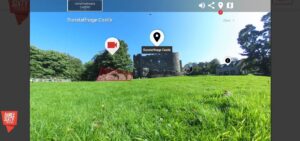
Virtual Castle Tour
Virtual Castle Tour Overview Hi, welcome to threesixty.tour. Today we’re going to be talking about, virtual castle tours. In this

How to Add Aerial images to Your Virtual Tour Without Having Aerial Images
How to Add Aerial images to Your Virtual Tour Without Aerial Images Overview Hi, welcome to threesixty.tours in this video,

8 Tips to Create Great Virtual Tours
8 Tips on How to Create Great Virtual Tours Overview We have presented this content in video form and the
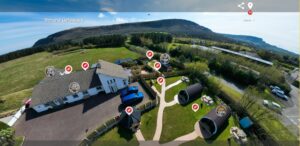
How to Sell Better Matterport Tours to Hotels
How to Sell better Matterport Tours to Hotels Overview We have presented this content in video form and the written
How to Create Unique Matterport Tours
How to Create Unique Matterport Tours Overview We have presented this content in video form or written form for you

Types of Virtual Tours & Why Create Them
Types of Virtual Tours & Why Create Them Table of Contents Many sectors have started to employ virtual tours more
The best 360 cameras
The best 360 cameras for every budget and every use, from capturing adventure sports to showcasing real estate.

The best 360 cameras have developed hugely over recent years as camera tech pushes on with ever-increasing megapixels and light sensitivity. In-camera image stabilisation, space-scanning for automatic 3D modelling and improvements in build quality and waterproofing mean they're now ideal for almost any scenario.
Whether you’re an adventurer who kayaks down white water, a real estate photographer who wants to provide the best quality 360 shots, or you simply want to strap a camera to your motorbike or car to record your holidays, there’s an option for you.
Some of the best 360 cameras have interchangeable lenses while others are perfect for job-specific work such as real estate. Therefore, it’s important you focus on what’s right for you before purchasing. Luckily, we’ve rounded up the best 360 cameras available now for you to choose from, for all kinds of uses and budgets (if you're after a bargain, keep an eye on our Black Friday hub ).
If you're also on the hunt for trail cameras check out our best trail cameras guide. Or for magnificent aerial footage you’ll want to read our guide on the best camera drones . If it’s the best DSLR or mirrorless you’re after, take a look at our best cameras roundup. For now, though, read on for the best 360 cameras available today.
The best 360 cameras in 2021
Why you can trust Creative Bloq Our expert reviewers spend hours testing and comparing products and services so you can choose the best for you. Find out more about how we test .
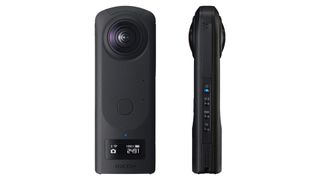
01. Ricoh Theta Z1
Specifications, reasons to buy, reasons to avoid.
Ricoh’s Theta Z1 is its flagship 360 model. It's able to record spherically in 4K UHD30 and captures 360 stills at 23MP. The back-illuminated 1-inch CMOS sensor produces minimal noise in low light conditions outside or in – perfect for virtual tours. The newly developed lens unit improves optical clarity, and with an aperture range from f/2.1-5.6, it's designed to reduce flare, chromatic aberration, and ghosting as well as lengthening the depth of field.
The Theta Z1 captures images in raw (DNG) and JPEG format for flexible post-production and utilises a four-channel microphone for realistic sound recording. Able to record both video and stills, the Theta Z1 also works as a 4K live streaming device.
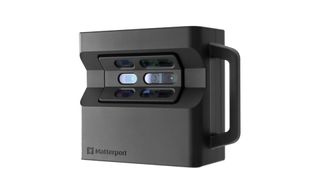
02. Matterport Pro2 3D
A staple in the real estate photographer’s arsenal, the Matterport Pro2 3D works by recording 360 imagery of a space thanks to its in-built motorised mount, and then delivers a full resolution virtual tour straight to your smart device. Follow the simple setup instructions to capture indoor spaces and automatically attain a floor plan and 3D model to navigate through. After the space is processed you can even go into the model and label objects or measure them – ideal for renovations and online marketing.
It outputs at 134MP, has GPS, and can scan for up to 8 hours in a single charge with a 4.5 hour charge time, making it useful for photographing multiple properties in one day. It’s a little bigger and heavier than others in this list, and it may take a little longer to photograph (up to 30mins for a 100sq/m space) but that’s due to the 3D scanning and modelling tech.

03. Insta360 Pro 2
Chappie robot looks aside, the Insta360 Pro2 is a professional 360 camera with incredible specifications and performance designed for full-time videographers who need 360 photos and videos with the option of recording in 3D. It can record 8K video at 30FPS in 3D (that’s twice the amount of data to process) and can jump up to 60FPS in 2D mode, or 120FPS in 4K 2D.
Dynamic range issues are combated with in-camera High Dynamic Range (HDR) recording to save highlights and shadows from clipping. In-built stabilisation comes in the form of the FlowState technology and a 9-axis gyro to provide gimbal-quality steady footage for use with Virtual Reality headsets. It does all of this in a compact body and links with Farsight live monitoring for real-time viewing.
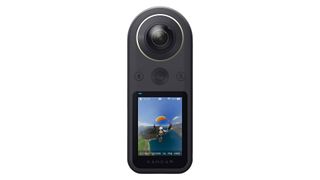
04. Kandao QooCam 8K 360
A whopping 8K video resolution is a massive feat in a consumer 360 camera of this size. Capable of dropping down to 4K, it can record at 120FPS for ultra slow-mo footage. Its 6-axis gyro paired with the IMU sensor and in-built tech means footage is stabilised in-camera for smooth recording. Self-shooting from a monopod or selfie-stick is easy too as the camera automatically removes the stick for cleaner results. This 8K 360 camera can slip into a jacket pocket easily, making it ultra portable for use on the road.

05. GoPro Max
GoPro is known for building action cameras that can withstand a hell of a beating and the GoPro Max is no exception. Natively waterproof to 33ft, shock resistant and tiny, it’s ideal for mounting on motorcycles, cars and other vehicles alike. GoPro bills the Max as three cameras in one. That’s because it can capture 6K video in either 360 or standard format when flipped over to HERO mode, and the Max can be used as a 1080p live streaming camera for easy vlogging.
Shoot ultra smooth 360 timelapses using Max TimeWarp, record 270-degree panoramic shots with PowerPano and use up to 12 voice commands to control the device for hands-free operation.

06. Vuze 3D 360 4K VR
Virtual Reality (VR) is all about capturing true-to-life footage in as much detail as possible. That’s why the Vuze 3D 360 4K VR is perfect for VR use. The camera has eight Full HD lenses combined in pairs to capture 360 degree 3D video footage for more realistic VR output. At just 450g the camera is pocket-sized and can slip straight into a camera bag without any problem. A neat fold-away tripod also doubles as a selfie stick and the camera comes in four vibrant colourways
In 3D 360 it records video at 4K30 but in 2D 360 this jumps up to 4K60. Easy to use, it requires the press of just a single button and can be edited together on a smart device or laptop before publishing.
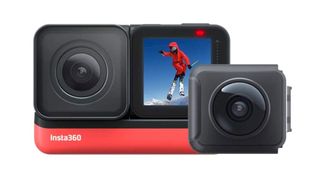
07. Insta360 ONE R Twin Edition
Throwing a punch at GoPro, the Insta360 One R Twin Edition takes things up a notch with not one but two lens options: a 360-degree dual-lens module and a single 4K wide-angle which are easily slipped in and out of the camera for ultimate modular performance. The screen can also be rotated for use in either direction.
A big 1-inch image sensor makes it usable in low light conditions and comes equipped with FlowState image stabilisation, auto framing, hyperlapse mode, and 8x slow motion. It can also be operated via voice control and shoots 5.7K video resolution.
- The best low-light cameras
- The best camera phones
- The best camera for beginners
Thank you for reading 5 articles this month* Join now for unlimited access
Enjoy your first month for just £1 / $1 / €1
*Read 5 free articles per month without a subscription
Join now for unlimited access
Try first month for just £1 / $1 / €1
Get the Creative Bloq Newsletter
Daily design news, reviews, how-tos and more, as picked by the editors.

Jason Parnell-Brookes is an Internationally award-winning photographer, educator and writer. He won Gold in the Nikon Photo Contest 2018/19 and was named Digital Photographer of the Year in 2014. Jason is a qualified teacher, Masters graduate and works with many high profile international clients. For Creative Bloq, he writes about cameras, photography and video and photo editing.
Related articles


Finding the perfect cameras for Virtual Tours
In the digital age, immersive online experiences have become a cornerstone of various industries. Among these, 360-degree virtual tours have emerged as a powerful tool for engaging audiences by enabling them to explore environments and spaces as if they were physically present. Whether you’re a real estate professional aiming to showcase properties, a business owner looking to provide a virtual tour of your establishment, or a photographer eager to venture into the world of immersive photography, selecting the right camera is a pivotal step towards delivering awe-inspiring and captivating content. After reading this guide check out this list of the best cameras that could be perfect for you, https://www.momentumvirtualtours.com/blog/whats-the-best-camera-for-photography . In this comprehensive guide, we’ll delve even deeper into the key factors to consider when choosing the ideal camera for creating seamless and visually stunning 360-degree virtual tours.
Mastering the Fundamentals of 360-Degree Virtual Tours
Before we dive into the intricate details of camera selection, it’s imperative to grasp the fundamentals of 360-degree virtual tours. It is also important to decide what type of virtual tour you want to offer, for that go to; https://threesixty.tours/blog/virtual-tours/ . These tours involve the meticulous capture of a series of images in all directions – horizontally and vertically – to create a coherent and immersive experience for viewers. These images are then seamlessly stitched together using specialized software to craft a panoramic view that places users at the center of the action. Consequently, the camera you opt for must possess the capabilities to capture high-resolution, distortion-free images with precision and accuracy.
360 Cameras can capture the full picture as demonstrated above. Through stitching pictures and editing we can get a complete 360 picture.
Types of Cameras for 360-Degree Virtual Tours
The realm of cameras suitable for 360-degree virtual tours encompasses a plethora of options, each offering its unique advantage. Here, we’ll delve into the most common types in even greater detail:

- Mirrorless Cameras : As the name suggests, mirrorless cameras are designed without the mirror mechanism found in DSLRs. This design choice results in a more compact and lightweight camera, making them highly portable for on-the-go 360-degree photography. Some models offer the advantage of interchangeable lenses, rendering them versatile tools for capturing 360-degree photographs. While their sensors may be smaller than those in DSLRs, they still deliver impressive image quality and are ideal for situations where portability is paramount.
- 360-Degree Cameras : Designed explicitly for the purpose of crafting immersive content, these cameras capture a complete spherical view in a single shot. Notable models include the Insta360 ONE X and Ricoh Theta Z1, both of which are highly regarded for their user-friendly interfaces and stellar image quality. These cameras are compact, lightweight, and boast features tailored to 360-degree photography, such as dual lenses and real-time stitching capabilities. More on 360 cameras can be found on in https://www.momentumvirtualtours.com/blog/360-virtual-tour-camera/ .
- Smartphones : In certain scenarios, high-end smartphones equipped with capable cameras can be employed for basic 360-degree photography. When paired with compatible accessories or applications, these smartphones can serve as cost-effective alternatives. Some smartphone models even support add-on lenses or attachments that enhance their 360-degree photography capabilities.
Criteria for picking your perfect camera can be found here, https://panoramic-photo-guide.com/virtual-tour-360-photography/
Resolution and Image Quality
Among the most critical factors to weigh is the camera’s resolution and image quality. There are different image files and they all have different use cases, so deciding which image file to use https://kinsta.com/blog/image-file-types/ can help. When it comes to 360-degree virtual tours, these factors are paramount, as they directly impact the overall visual experience. A higher resolution not only results in superior image quality but also grants viewers the ability to zoom in without sacrificing intricate details. Aim for a camera boasting a resolution of at least 4K or higher, ensuring that your virtual tours are replete with breathtaking visuals that leave a lasting impression. While resolution is paramount, High Dynamic Range (HDR) capabilities are equally important. HDR allows a camera to capture a wider range of light and shadow within a single image, resulting in scenes that are true to life. High Dynamic Range allows us to improve how we capture natural light, overcome challenging lighting conditions and enhance the visual appeal.
Lenses and Field of View (FOV)
The lens plays an indispensable role in capturing a comprehensive 360-degree view. When considering cameras for virtual tours, prioritize those equipped with a wide-angle lens or a fisheye lens.

Lenses are a very complicated choice so for more detail about which lenses to use at which time I am including a guide here; https://panoramic-photo-guide.com/virtual-tour-360-photography/choosing-photo-lens-to-create-virtual-tour.html . These specialized lenses possess the capability to capture an extensive field of view without distorting the image. Ideally, opt for a camera with a minimum Field of View (FOV) of 180 degrees, as this ensures immersive experiences without the encumbrance of distortion. Additionally, consider cameras that offer adjustable aperture settings, a feature that proves invaluable when tackling a variety of lighting conditions. A wider aperture allows more light to enter the sensor, ideal for low-light conditions, while a narrower aperture provides greater depth of field for well-lit scenes. For more about the differences in lenses visit, https://www.momentumvirtualtours.com/blog/prime-vs-zoom-lenses-whats-the-difference/ .

Compatibility and Workflow Streamlining
An often-overlooked aspect of camera selection for 360-degree virtual tours is compatibility with the software and hardware that comprise your post-production pipeline. Some cameras come bundled with dedicated applications and software that significantly simplify the post-processing workflow, facilitating the seamless stitching of images into a panoramic masterpiece. These applications often include features for real-time previewing, exposure bracketing, and direct control over the camera’s settings. Examples include the Insta360 mobile app and the Ricoh Theta Stitcher. Alternatively, you may choose to use third-party applications and software, which can provide more advanced control and flexibility but may require a steeper learning curve. For an updated list of 10 different softwares one can use visit, https://expertphotography.com/best-photo-stitching-software/

It’s crucial to assess the compatibility of your camera with the specific stitching software you intend to use. Some cameras offer native stitching capabilities, automatically combining images to produce a cohesive 360-degree photo or video. Others may require manual stitching, which can be a time-consuming process. Additionally, consider the camera’s compatibility with accessories such as tripods, monopods, and stabilizers, which can greatly enhance the quality and stability of your shots. All these different cameras come with diverging qualities which help us decide which one to buy. One more criteria that should be considered is the price. You can find how much a 360 camera should cost at, https://www.momentumvirtualtours.com/blog/how-much-does-a-360-camera-cost/
Conclusion: Crafting Mesmeric 360-Degree Virtual Tours
In summation, the creation of captivating and mesmerizing 360-degree virtual tours hinges on your choice of camera. By first grasping the rudiments, exploring the plethora of camera types available, placing a premium on image quality and resolution, prioritizing the lens and Field of View (FOV), and meticulously examining compatibility with your workflow, you can make a judicious and well-informed decision. Armed with the perfect camera, you’ll possess the tools necessary to craft immersive virtual tours that not only captivate and engage your audience but also elevate your offerings, whether you’re showcasing real estate properties, promoting businesses, or capturing the sheer splendor of natural landscapes. Now that you know which camera to choose, you will naturally need to know how to use it. Luckily we already have a guide for you: https://www.momentumvirtualtours.com/blog/how-to-use-a-camera-for-beginners/ .
Want 20% OFF Your Next Shoot?
Subscribe to Our Weekly Newsletter for 20% OFF your Next Shoot!

Buying Guide: Which is the best 360 camera for virtual tour (2018): detail vs. dynamic range vs. usability

Virtual tours are more popular than ever, with an increasing number of 360 shooters seeking to shoot virtual tours, and many platforms adding virtual tour features. In this post, I will discuss my recommendation for the best camera for virtual tours, with supporting evidence, based on my experience as a photographer since 2007, and my experience owning more than forty 360 cameras and panoramic heads.
Table of contents: Factors considered Detail Usability Dynamic Range Conclusion
For purposes of this comparison, I only focused on 360 cameras. For maximum detail and image quality, you can use a DSLR with panoramic head. I have a few that I will be comparing in the future.
In choosing a 360 camera for virtual tours, the three factors I consider most important are: detail, dynamic range, and usability. To clarify, detail is how much actual detail is visible, regardless of the nominal resolution. It depends on the lens of the camera as well as the sensor. Within detail, I also include the stitching performance, which depends on both the stitching algorithm as well as the lens performance at the periphery. Dynamic range is the range of shadows and highlights that the camera can capture. Usability includes both the shooting controls (exposure, features such as bracketing, etc.) and workflow.
Of these, the one that is most important to me is detail, then workflow, and finally dynamic range. The reason dynamic range is least important to me is because virtual tours are almost always shot in controlled conditions, making it easy to bracket your shots and blend the exposures. However, no amount of blending or bracketing will increase the detail that the camera can capture, which is why detail is most important to me for virtual tours.
I compared four of the most popular 360 cameras for photos: Insta360 One , GoPro Fusion , Ricoh Theta V , and Xiaomi Mijia Mi Sphere . Although some professional cameras such as the Panono and Insta360 Pro have higher detail, they have a large minimum stitching distance, which makes them more challenging to use for indoor virtual tours, therefore I did not include them in this comparison.
I compared samples shot in identical conditions, using the 360 camera comparison tool .
Here are 100% crops from each of the four cameras:

Here is a comparison between Insta360 One and Ricoh Theta V:

Here is a closeup comparison between Xiaomi Mijia Mi Sphere and GoPro Fusion:

Here is how I would rate them for detail, in reverse order:
4. Ricoh Theta V (8.0) . Average level of detail (8.0), although softer near stitch line. But the stitching is excellent (+0.1). 3. Insta360 ONE (8.3) . Noticeably more detail than Theta V (note the window frame). 2. GoPro Fusion (8.6) . Noticeably more detail than Insta360 ONE (note the shingles on the roof are more detailed in the Fusion than Insta360 ONE). 1. Xiaomi Mijia Mi Sphere (8.8) . Noticeably more detail than GoPro Fusion (look at the shingles on the roof; you can discern the grid pattern of the net of the soccer goal).
Shooting controls : Ricoh Theta V, Insta360 One and Xiaomi Mijia Mi Sphere all have full manual exposure, and have ISO priority and shutter priority. GoPro Fusion allows the user to specify the ISO, and has a night exposure mode for long exposures, but cannot specify shutter speeds less than 1 second. Xiaomi and Theta V both have bracketing, although Theta V’s bracketing controls have more control Theta V is the only one with built-in HDR in this group.
Raw mode : The Insta360, Fusion, and Xiaomi all have raw mode, although Insta360 ONe is unique in being able to stitch in raw, not just shot in raw. Theta V does not yet have a raw mode.
Workflow : The easiest workflow is the Theta V’s because Theta V stitches the photos in-camera. Insta360 and Mi Sphere have similar workflows except that Mi Sphere has no desktop app for Mac. Fusion’s workflow is more tedious because as of April 2018, you cannot export a 360 photo as an equirectangular photo on the smartphone app.
For usability for photos, here is how I would rate them, in reverse order. Note: the rating is different for the usability rating in my comparison tool, because factors for their usability for video are excluded from the scores below.
4. GoPro Fusion (7.9) + raw mode (requires third party stitcher) o partial exposure control – can’t export 360 photo to mobile
3. Xiaomi Mijia Mi Sphere (8.5) + bracketing option + extensive exposure controls + can shoot DNG raw but stitching requires 3rd party app
2. Insta360 ONE (8.8) + stitch DNG raw with desktop app + shoot DNG raw + extensive exposure controls – no bracketing option
1. Ricoh Theta V (9.0) + Built-in HDR + in-camera stitching (with high quality) + extensive exposure controls + extensive bracketing options – no raw mode
Dynamic Range
Here are crops from each of the four cameras. The crops are shown in approximately normal field of view.

Here is how I rate them for dynamic range, in reverse order.
4. Ricoh Theta V (8.0 without HDR) o average highlight range o average shadow range o average overall dynamic range
3. Xiaomi Mi Sphere (8.3) + excellent shadow range o average highlight range + above average overall dynamic range
2. Insta360 One ver 1.16 (8.7) + excellent highlight range + above average shadow range + excellent overall dynamic range
1. GoPro Fusion (8.8) + class-leading highlight range + above average shadow range + excellent overall dynamic range
Here is a summary of my recommendations: – To me, the best 360 camera for virtual tours is still Xiaomi Mi Sphere ( check here for discounts ), if your priority is image quality and are willing to do some edits. – If you want detail that is almost as good as Xiaomi but you don’t want to do much editing, then I recommend GoPro Fusion . Be warned that there is no 360 photo export for mobile as of April 2018, so you’ll need to stitch via desktop. – If your priority is speed, and being able to get decent photos without much editing, my recommendation would be Ricoh Theta SC . – If DNG processing is important to you, my recommendation is Mi Sphere (assuming you have a Windows desktop) or Insta360 ONE . Fusion is also a good option, although its RAW workflow takes more steps.
If you want to see how other 360 cameras would compare, check out the 360 Camera Comparison Tool . Also check out this real estate camera comparison which includes indoor photos.
You may also like

POLL: Which XPhase Scan is better? (Car interior samples)

First 16K XPhase Scan sample photos: why the stitching is impressive!

NEW! $499 XPhase Scan is a 16k 360 camera for virtual tours

Qoocam 3 adds GPS metadata and better image quality (updated comparison vs Insta360 X3 and GoPro Max)

DJI Mini 4 Pro on September 25: should you buy for real estate virtual tours?

AFFORDABLE 360 camera: $349 Qoocam 3 vs Insta360 X3 vs GoPro MAX
About the author.
10 Comments
Cancel reply.
Save my name, email, and website in this browser for the next time I comment.
Notify me of follow-up comments by email.
Notify me of new posts by email.
This site uses Akismet to reduce spam. Learn how your comment data is processed .
Thanks for the comparison. Wouldn’t the Theta V (and S as I think the photo is unchanged) benefit from using HDR, especially for interior virtual tours ?
Hi Bill. Yes they would. But you can do a manual HDR as well on the other cameras, particularly because virtual tours are typically controlled situations. Built-in HDR is therefore more of a matter of convenience, which is why Theta V rates the highest for usability.
Best regards, Mic
Thanks, might look into the Theta S again because bracketing with the Mijia is a bit of a pain since you generally need -3 to see the “content” of windows in a darker room but then +3 is of no use so you have to do it manually. Not to mention the actual merging in Photomatix or such…It’s too bad the Thetas don’t have a 50 ISO setting.
Wonderful… i love mi360 ☺.
Thank you very much my friend!
Best regards, mic
You wrote an article targeting specifically making a virtual tour and workflow and don’t mention GPS?
most decent tour software benefits from GPS coordinates being in the exif information.
MANY of the cameras and some of the software options, lack this feature.
If I’m making a tour, I’d damn well want to know if the combination of hardware and software includes it- or my workflow is going to be blown to hell.
Thanks Marke. There are many virtual tour software that don’t require GPS. Anyway, of these options, mi sphere and theta V have GPS if you shoot with their respective app. Fusion also has GPS. Insta360 ONE doesn’t. Best regards, Mic
I use Pannellum.js for a virtual tour on a website. It’s a great package, but it would definitely have benefited from having at least compass information. It was somewhat painful to try to orient each picture to the same direction. If you don’t do that, then when you jump into a new place it can look like you are looking in a completely different direction than you should be. I used a Nikon Keymission camera. I wish I had something nicer, like the Panono though. Nothing can compare to the quality of that, other than, I guess, using a DSLR.
This is an interesting review however it misses one key aspect for me – low light. How do these cameras stack up against each other when you’re trying to capture internal images (for example visiting an opera house with painted frescos!!!).
Thanks Adrian. I will make a low light comparison next time.

The new standard in 360° virtual tour software
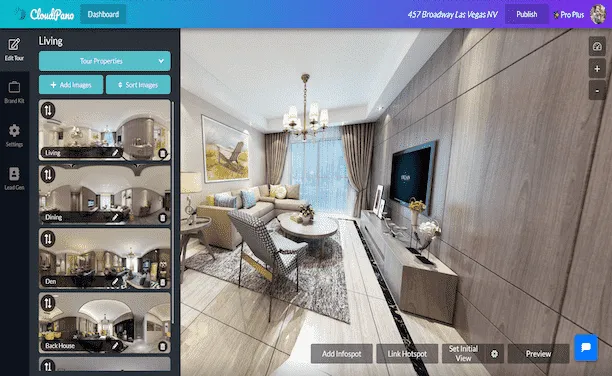
Create Interactive Engaging Content With CloudPano
360° virtual tours.
%20(1).webp)
To create your first 360º virtual tour click below:
360º Photography Services
%20(1).webp)
360º Virtual Tour Photography Services
Interactive 360° Spins
%20(1).webp)
To create a 360º spin click below:
The Best 360 Cameras for Virtual Tours in Real Estate
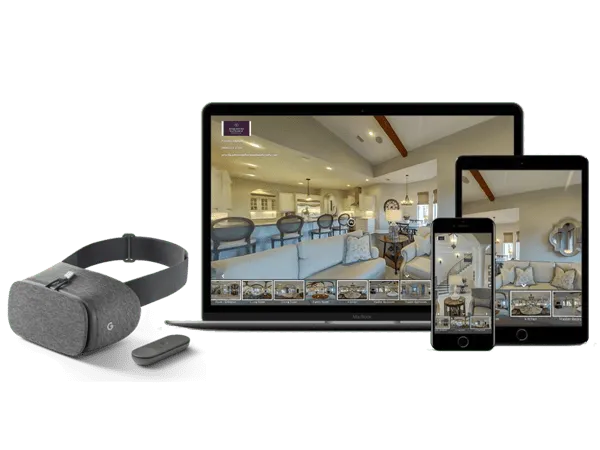
Create And Display Virtual Tours In 360 and VR
CloudPano 360° virtual tour software empowers you to create 360° virtual tours. Quickly create interactive virtual tours hassle-free. With a few clicks, you can upload, connect and publish a 360° immersive experience. No coding required. Get started today, its free. Click here.
How CloudPano Works
Create a 360° virtual tour with our easy three-step process.
.webp)
Capture photos in 360
Upload to CloudPano.com and create your tour
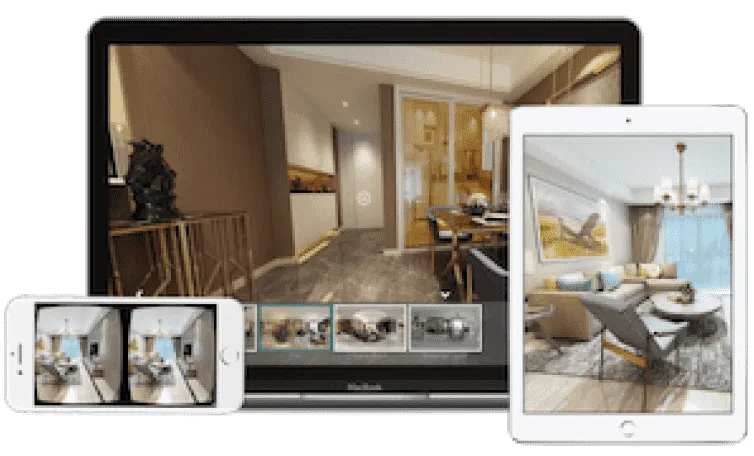
Share your tour with the world

Getting Started
What is a 360 virtual tour.
A 360 virtual tour on CloudPano is a real estate marketing tool to view and share a space in an immersive 360 environment. With a smartphone, the CloudPano viewer responds to your movement. This creates a responsive and immersive view of the property. Create your first 360 virtual tour in 5 minutes or less.
Add or Embed 360 Virtual Tours on any Website
(no app or plugin required).
When you publish a 360 virtual tour on CloudPano.com, you will automatically receive a code based link. You can embed your tour right onto your website. We host the tour, you show it off to the world.
Check out a live example
Cloudpano 360 virtual tour examples.
Explore some of our featured 360 tours from the CloudPano community
%20(1).webp)
Florida Luxury 360 Virtual Tour Click to view this demo
.webp)
New York VR Nursing Home Click to view this demo
.webp)
Auto Dealership Click to view this demo
.webp)
Luxury Residential Click to view this demo
.webp)
AirBnB Rental Click to view this demo
.webp)
Commercial Construction Click to view this demo
Simple 3D Tour Creation
Create your first tour in under five minutes..
Upload photos using a drag-and-drop interface. Click a single button to set an initial view for each scene. Add hotspots to navigate your tour.
Popular Features
Customize your logo
Set initial view
Re-order scenes
%20(1)%20(1)%20(1).webp)
Share In Full 360 and VR
Share and display on any smart device out of the box - no app required.
Give meaningful experiences to your viewers. Built-in motion sensing capabilities and VR-goggle modes work right in the mobile browser. Reach your customer on any platform. Simply share your virtual tour with a single URL link.
Android/iOS
Google Cardboard
No app to download
VR/Motion Navigation
Customize Your Tour Branding
Add logos, hotspot navigation and more.
Use linked hotspots to teleport between scenes. Add your logo and establish your brand.
Customize Your Logo
Contact Information
Share on social media
Keep Your Custom URL
.webp)
White-label your virtual tour
Use your own website domain.
Remove all references of CloudPano.com. Use your own logo and keep your website domain. Easily use your own URL. Add 360 virtual tours into your business and keep our name hidden.
Customize Your URL
Remove CloudPano Branding
The Perfect Software Toolkit For Virtual Tour Entrepreneurs
Start a local 360 virtual tour business, add virtual reality marketing to current business.
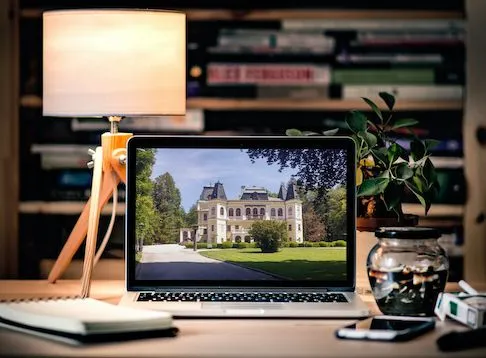
A Simple Software Solution To Power Your Virtual Tour Revenue
Private Label / White Label - Keep Your Website Domain Name and Protect Your Brand
Add or Embed Your Published 360 Virtual Tours Directly To Your Website or Blog (Wordpress Compatible)
Present Your 360 Tours In A Virtual Reality Headset
International Hosting On Local Server Networks (Speed Guaranteed)
CloudPano.com is a Virtual Tour Software built for entrepreneurs, photographers and real estate brokers. You will be empowered to create world class 360/VR virtual tours quickly, market real estate at a high level AND keep your brand on the front of tour. If you are looking for a 360 virtual tour software built for the business owner - you are in the right place.
Simple Pricing
Build a 360 virtual tour for free. Make the tour your own for a few dollars. One time fee, hosted tour for life.
- Unlimited 360 Photos
- Share Anywhere
- Gyroscope-enabled Motion Control
- Add Branding and Logo
- Hotspots and Infospots
- Three Free Tour Limit
- Remove "Made by CloudPano" watermark
- Embed On Your Website
- Complete access to CloudPano's 360 tour creator
- Unlimited tours
- Life-time tours - no expiration
- White-label/Bring your own URL
- 8K/High-def premium photo uploads
- Google Analytics
- Embed HTML and Media
- CloudPano Live Video Chat
- MLS-Compliant Tour Cloning
- Ambient Sounds and Music
- Tour Privacy Settings
- Lead Capture Tool
PRO PLUS BUSINESS
- Enterprise Partnership Access
- Custom Integrations
- Unlock Team Work Flows
- Industry Specific Feature Customization
- Dedicated Account Managment
- CloudPano Live For Sales Teams
- Custom Training
- Hardware Onboarding
- Host Account Bundles
- Branded Experience Management
CloudPano Pro User Testimonials
The technology is pretty amazing and the finished 3d tour is high definition. the tours played well on everything from a desktop to a cellphone. highly recommended., i just pitched a $2.5 million dollar fsbo with the vr headset and cloudpano software. i impressed the client, built rapport and added value with the vr presentation. it's marketing like that this that makes you stick out amongst your competition... and ultimately this moves property at a high level., this technology changes the game. my customers are very excited about it. and i know when my customers are excited about it, i am going to make some more money., 360 tours are an easy way to upsell my clients on location. plus, it only takes a few minutes to create a virtual tour on cloudpano.com., cloudpano has a crisp and clean design. plus the platform hosts the 360 virtual tours for me, so i can create tours quickly and get back to shooting., being able to have a full 360 tour of my listings and show sellers how i can take marketing of their home to the next level is huge i appreciate you and your team helping me out along the way answering any and all questions that i have had so far and i am excited to continue to implement and grow my business with the help of you and your team., common questions.
We are passionate about changing the world through software. Call us or email us anytime.
1301 Fannin St #2440 Houston, TX 77002
+1 (281) 410-8727
Email us at

© CloudPano.com


7 Best Real Estate 360 Cameras In 2023
If you’re a real estate professional in 2023, you’ve likely seen how popular virtual tours have become. To make one, you’ll need a real estate 360 camera.
People can look at a photo but don’t get a sense of a property and its floor plan. For this reason, a virtual real estate tour is a great way to get them to feel like they are in the space. They can become attached to a property even before they’ve seen it.
But creating a virtual tour requires more than a DSLR and a photo-stitching app. While you can create a panorama with nearly any camera, a 3D image requires a particular type of camera and sensor. Let’s look at some of the most popular 360 video and photography options.

This is my go-to 360 camera for all of my real estate listings. Insta360's virtual tour kit provides everything you need to create high-quality VR tours for your next listing.
The kit includes the new Insta360 X3, Invisible Selfie Stick, Tripod, microSD Card, and Lens Cap. Using my affiliate link, you'll also get a free set of lens guards!
This is far and away the highest quality and easy-to-use setup out there.
- Includes everything you'll need
- HDR Photo & Video
- Excellent Warranty and Support
- More Expensive Than Some Other Options

Ricoh Theta SC2 is a 360-degree camera that records 4K movies, high-quality images, and high-resolution videos. It can be used in various scenes to capture the world around you.
You can also enjoy an immersive viewing experience of your recorded media on the smartphone application "Theta+". High image quality: Records natural 360° still images and videos with high resolution and highly precise image stitching.
4K movie High-quality 4K 360-degree videos using the latest image stabilization technology. Night View Mode: The new preset mode allows for excellent night scenes with low noise.
- Good Image Quality
- Great Value
- Design Feels Excellent
- Limited Memory (Non-expandable)
- Battery Is Built-In
- Issues Occur Sometimes With Stitching 360 Photos/Video

Insta360 ONE RS Twin Edition is two action cameras in one. The 4K Boost Lens delivers stunningly detailed wide-angle videos, while the 360 Lens offers endless creative possibilities. With FlowState Stabilization, you'll get buttery smooth image stabilization, no matter what lens you use.
Plus, the new sensor captures crisp 48MP photos, ultra-detailed 6K widescreen videos, and vibrant HDR action videos. The Invisible Selfie Stick makes the 360 Lens disappear from your shots for impossible drone-like footage and third-person perspective video.
- Modular Design Allows 360 and Action Cam
- Excellent App Experience
- Can't Shoot 4K 120FPS Slow Motion
- Small Preview Screen

With its three cameras, the GoPro MAX lets you capture traditional video and photos or immersive 360 footage. The Vlog mode with shotgun-mic performance and front-facing screen give you great audio and video quality for your social media posts.
The Max HyperSmooth stabilization keeps your shots steady, while the live streaming in 1080p option lets you share your experiences as they happen. And with Horizon Leveling, you get that silky-smooth cinematic look whether you're getting sideways, flipping through the air, or chasing your kids.
- Excellent Stability
- Great App Experience
- Audio Quality Above Average
- Not As Many Frame Rate and Resolution Options
- Low-Light Video Not Superb

Insta360 ONE X2 is a professional 360-degree waterproof 4K action camera. It can shoot first in every direction with super 5.7K 360 capture and then choose your favorite angle later.
Or pick just one lens with Steady Cam mode for ultra-stable wide-angle footage. The Insta360 ONE X2 also supports live streaming, slow-motion video recording, time-lapse shooting, and more.
- Build Quality
- Camera Quality
- One X Companion App
- USB-C Port Design
- Small Display
- App Requires New Phone

The RICOH Theta Z1 is a 360-degree camera that can capture photographs and videos at up to 8K resolution. The camera features dual lenses on each side of the body, allowing seamless panoramic images without any stitching required.
It also has a tripod mount and an auto-calibration function to ensure your photos are straightened out before you begin shooting. This makes it easy to share your images on social media platforms like Facebook or Instagram.
- 1-inch Sensors
- Variable Aperture
- Shoots RAW Photos
- Low Video Resolution
- Limited Storage
- Very Pricey

The KODAK PIXPRO Orbit360 4K 360° VR Camera Adventure Pack is designed for adventurers and explorers. The rugged body of the camera comes with two fixed focus lenses, which are curved to capture full 360 Degree 4K video and easily upload 360 Degree video and photos to social media platforms like Facebook and YouTube.
The dual 20MP CMOS sensors allow you to shoot in three different multi-view angles 360 Degree Spherical VR Mode, 235-degree Dome Mode, or 197-degree 4K Ultra Wide Mode.
- Full 360 Video Capture
- Audio Quality
- Multiple Capture Options
- Older Technology
- Visible Stitching Seams
Choosing the Right 360-Degree Camera
360-degree cameras are relatively new. Because of this, they have very different specifications. When choosing 360-degree cameras, you may get confused because they’re all very different. Here are a few aspects you might want to look for.
Software . Some 360 cameras come with software solutions, while others rely on professional software like Lightroom, Final Cut Pro, Premiere, etc… If you’ve never done video or photo editing before, you may want a camera with its software solution.
- Resolution . Capturing 3D imagery is hard. To compensate, some cameras don’t have very high resolution. But if you’re capturing real estate photos, you know that quality is everything. Look for a camera that has at least 14 megapixels and HDR.
- Video features . Not only may you want a 360-degree tour, but you might want the ability to port it into a virtual reality headset or share it online through social media. Some cameras have live streaming functionality, making building a social media following easier.
- Battery life . Depending on how many listings you usually work with, battery life may or may not be important. 360 cameras have relatively limited battery life, lasting less than an hour. But some, such as the Samsung Gear, have a battery life of up to a few hours.
A basic 360-degree camera should be good enough to produce photographs and videos for professional, polished real estate listings. Many 360-degree cameras are built around snowboarding, skiing, mountain climbing, and other outdoor activities — which means they’re very good at capturing high-quality 360-degree imagery quickly.
FAQs On Real Estate 360 Camera
What accessories do you need to capture a 3d tour.
For real estate photography, you should usually have a tripod and a remote “clicker” to take photos while out of the room. When you purchase the kit, a 360-degree camera usually comes with at least these peripherals.
How is a 3D virtual tour made?
A 360 camera captures multiple images. From there, those images must be composed into a 3D virtual tour using a software platform. A virtual tour camera will come with basic software, but you may need to learn a solution like Lightroom to perform more advanced editing.
Are 3D virtual reality tours necessary?
3D tours and virtual reality tours are imminently shareable on social media. They are an excellent way for real estate professionals to build a following and interest — and they’re also a good way to sell properties when people can’t otherwise view them in real life. Want a tool that can make virtual reality tours for you? Check out my post on the virtual tour software EyeSpy360 .

Would You Like To Partner With Me?
I’ve helped hundreds of real estate agents, team leaders, & brokers all over the country increase their sales, online presence, and create scalable systems. I would love the opportunity to work with you. Together , we can make this year your best yet!
Similar Posts

Time Blocking for Real Estate Agents – Daily Checklist
Time is the most valuable asset we have. We all have the same amount of time each day, yet some seem to get more done than others. Time blocking for real estate agents is a solid strategy that ensures you get the most out of each hour of your day and eliminates too much idle…

6 Steps To Handle Every Real Estate Objection (+ 5 Examples)
The real estate industry is deceivingly easy to get into, so much so that many don’t understand the full scope of the job until they are knee-deep in it. With the majority of new agents having no sales experience under their belt, it is no wonder the industry has an 87% failure rate. However, it doesn’t…

11 Best Places To Be A Real Estate Agent In 2023 (Top Cities)
Everyone knows that real estate is hyper-local. But that begs the question: What are the best places to be a real estate agent? You can go to real estate school anywhere. It all depends on where you want to live. But you need to decide which real estate market is right for you before you…

The 3-Step Facebook Real Estate Funnel For Generating Leads
Are you looking to draw in more leads for your real estate business using Facebook? A key element of real estate Facebook marketing is the customer funnel. In this post, I’ll share the three sections of the funnel, how to maximize your leads, and how to get a better return on investment. Identify Your Top…

7 Effective Real Estate Video Tips For Jaw-Dropping Videos
Video is key to a successful content marketing strategy. And yet, most realtors do not take advantage of it. In this post, I will share the best real estate video tips that you can use to create quality videos and grow your real estate business. Why Use Video There are very few real estate agents…

How To Use TikTok For Business (Step-By-Step TUTORIAL)
If you’re looking to tap into the massive potential of TikTok for your business, you’re in the right place. In this step-by-step tutorial, we’ll show you how to effectively leverage this popular social media platform to reach a wider audience and drive engagement. Watch The Video On Youtube With these tips in mind, you’ll be…
I don’t think any of this cameras will work well on the year 20222 I am sure of it! How pretentious to think that you can predicy the so far ahead future. I would have said 2030, but 20222… C’mon!
Haha! Too funny Johnny. I changed the title per your comment 🙂
How does the Insta360 X3 compare to Matterport Axis?
Hey Maurice! I’ve not personally used the Matterport Axis although I’ve heard good things about it. I do think Matterport has led the real estate specific 360 space for many years now and their software is top of the line to pair with your capture device (in this case your smartphone). For $79 I would give it a shot and see how it performs. I bet you’d be happy with the results.
Leave a Reply Cancel reply
Your email address will not be published. Required fields are marked *
Save my name, email, and website in this browser for the next time I comment.
Best Tripod for 360 Virtual Tours
The best tripod for 360 Virtual Tours is the Manfrotto MT190XPRO4 Aluminum 4-Section Tripod. It is lightweight, sturdy and very versatile. It has an adjustable center column that can be used to achieve different angles with great precision. The legs are four sectioned and extendable with flip locks making it perfect for adjusting height on uneven surfaces or even stairs in a multi-level building. Additionally, its quick power lock system makes setup and breakdown time faster while providing excellent stability when shooting shots from any angle.
A 360 virtual tour can be an excellent way to showcase a property or business, but it’s important to have the right equipment. The best tripod for creating these tours is one that supports both panoramic and video shooting, is lightweight, adjustable and has a secure locking mechanism. Look for models with rubberized feet for stability on uneven surfaces and integrated bubble levels so you know your shots are level. Additionally, make sure the tripod you choose will fit in with your camera setup – some tripods may only accommodate certain sizes of cameras or lenses. With the right tripod in hand, you’ll be able to create professional-looking 360 virtual tours!
Table of Contents
BEST 360 MONOPOD YET?!
Can You Use a Tripod With a 360 Camera?
Yes, you can use a tripod with a 360 camera. Tripods are essential for capturing stable footage with any type of camera and they work especially well when shooting pictures or videos in 360. You will want to make sure the ball head on the tripod is adjustable enough to support the weight of your 360 camera and ensure that it stays level while panning around. With some cameras, using a selfie stick instead of a tripod might be an option as long as it is sturdy enough to keep things steady without shaking during recording.
How Do I Make a 360 Virtual Tour With Dslr?
Creating a 360 virtual tour with a DSLR camera is surprisingly easy. The first step is to mount the camera onto a tripod and set it up in the center of your chosen space. Next, you’ll need to take several pictures of the entire space by taking shots around the tripod in either portrait or landscape orientation. Once you have all of your images, you’ll want to use software such as Adobe Photoshop Lightroom or Autopano Giga to stitch them together into one panoramic image. Finally, you can use services like TourWrist or Kuula VR for hosting your 360 virtual tours online and sharing them with friends and family. With these simple steps, anyone can create their own immersive 360 degree experiences!
How Do You Shoot 360 Virtual Tour?
Shooting a 360 virtual tour involves using specialized photography equipment like a fish-eye lens and stitching the images together in post-production to create an immersive experience. You can shoot with any type of camera, but it’s important to remember that the higher quality your photos are, the better the end product will be. When shooting, make sure you capture overlapping shots from all angles so that they can be stitched together later on. Once everything is shot and ready for post-production, use software designed specifically for panoramic photography such as PTGui or Kolor Autopano Giga to stitch your photos together into one larger image. This process usually takes some time depending on how many images you have taken and how detailed each image is. After this step is complete, upload your new 360 virtual tour online so others can view it!
Can You Make a Virtual Tour Without a 360 Camera?
Yes, you can make a virtual tour without a 360 camera. To do so, you will need to take multiple photos of the same space from different angles and stitch them together into an interactive panorama. This process involves taking several shots at each location, then combining them digitally with software such as Adobe Photoshop or Hugin. Once all the images are stitched together and edited for quality, they can be uploaded to sites like Google Street View or Tourweaver in order to create an immersive virtual experience that visitors can explore on their own devices.

Credit: 360rumors.com
360 cameras are an innovative tool for capturing immersive photos and videos. They allow you to take a 360-degree panoramic view of your surroundings, creating a visually stunning experience that can be shared with others on social media or in virtual reality (VR). With the rise in popularity of VR technology, 360 cameras have become increasingly popular amongst photographers and filmmakers alike. They offer a unique way to capture moments from all angles while providing viewers with an unprecedented level of depth perception.
Mobile Tripod 360 Degree Rotatable
This mobile tripod is an excellent choice for anyone looking to take steady shots with their smartphone. It features a 360° rotatable head that can be adjusted to any angle, allowing you to capture the perfect shot from any viewpoint. Its lightweight and convenient size make it great for travel or outdoor activities, while its adjustable phone holder fits most smartphones up to 6 inches in size. With this mobile tripod, you’ll be able to take professional-looking photos wherever your travels may lead!
Best 360 Camera Accessories
When it comes to 360 cameras, there are several great accessories available that can help make your experience even better. These include items like extra batteries and charging cables for longer recording times, protective cases for added durability and portability, selfie sticks or tripods for easier set up and shooting angles, memory cards with higher storage capacities to store more photos and videos, filters for enhancing colors or reducing glare in certain conditions as well as remote control mounts to keep the camera out of sight while capturing amazing footage. With these tools at your disposal, you’ll be able to take your 360-degree videography game up a notch!
360 Rotating Camera Stand
A 360 rotating camera stand is a great tool for photographers, filmmakers, and content creators looking to capture dynamic angles on their shots. It allows for the smooth rotation of cameras in any direction, providing an almost limitless range of creative possibilities when capturing video or still images. This type of stand also helps reduce shake and blur from hand-held shots while offering adjustable speeds so you can get exactly the motion you need.
Insta360 Tripod
The Insta360 Tripod is a great accessory for anyone who wants to take their 360-degree videos and photos to the next level. It has adjustable legs and can be used with both smartphones and cameras, allowing you to capture stunning panoramic shots from any angle. With its lightweight design and convenient carrying case, it’s easy to transport this tripod wherever your travels may take you. Whether you’re creating content for professional or personal use, the Insta360 Tripod will help you get amazing results every time!
Bushman Monopod
The Bushman Monopod is a lightweight and durable support system designed for photographers, videographers, and hunters. It features extendable legs with an adjustable height range from 16 to 65 inches, as well as a quick-release plate that makes it easy to switch between cameras or lenses. The monopod also has rubber feet that provide extra stability while shooting in uneven terrain. With its superior construction and strong load capacity of up to 22 pounds, the Bushman Monopod allows you to take sharp images in any outdoor setting.
In conclusion, it is important to consider all the factors mentioned above when choosing a tripod for 360 virtual tours. A good quality and reliable tripod will save you time, money and energy in the long run. With these tips in mind, you should be able to find an ideal tripod that meets your needs.
Leave a Comment Cancel Reply
Your email address will not be published. Required fields are marked *
The leading authority in photography and camera gear.
Become a better photographer.
12.9 Million
Annual Readers
Newsletter Subscribers
Featured Photographers
Photography Guides & Gear Reviews

How To Create A Virtual Tour For Real Estate in 2024
Learn how to create an engaging virtual tour for real estate, showcasing properties effectively to captivate potential buyers and enhance listings.
Learn | By Jeff Collier
As an agent hoping to attract prospective clients, you should learn how to create a virtual tour for real estate.
This marketing approach can limit the hassle that comes with normal house tours.
Plus, it significantly saves you time and effort, which real estate agents value greatly!
As a professional photographer, I’m glad to shed some light (pun unintended) on everything related to virtual tours.
I’ll explore their importance for your business and their different types.
Then, I’ll go through step-by-step instructions to help you build a tour that showcases your home’s best features.
- Best Drone for Real Estate Photography
- How to Take Real Estate Photos With an iPhone
- Best Camera for Real Estate Photography
- Real Estate Drone Photography Tips for Professionals
- 7 Best Lenses For Real Estate Photography
- Best Editing Software for Real Estate Photography
Table of Contents
What Is a Virtual Tour in Real Estate?
In real estate photography, a virtual tour is a screening of the interior and exterior of a property to showcase its features to potential buyers.
How Does a Virtual Tour Work?
Virtual tours try to mimic traditional home tours by allowing the viewer to interact with elements in the house.
It’ll be like they’re standing in each room, looking at every corner from different perspectives without dealing with the flat view of a normal photo.
Depending on the type of virtual tour, it can either engage you in 360-degree photo-realistic visuals or show you a sequence of videos.
What Does a Virtual Tour Consist of?
Normally, virtual tours consist of several 360-degree or panoramic photos stitched together to create the illusion of walking inside the house.
Most of the time, these visuals are accompanied by background music, on-screen text, or narration.
The tour starts from the house’s entry point, and then the screen pans, rotates, or dollies to show you around each room. Based on the nature of the tour, the viewer can either change the viewing angle themselves or follow a predetermined path.
Why Create a Virtual Real Estate Tour?
According to research, 61% of home buyers chose virtual tours as the best technology for evaluating real estate.
It fared better than accurate listing information (58%) and high-quality images (51%).
But what makes virtual tours everyone’s favorite option?
First, these tours are distance-friendly—perfect for people who want to move from one state to another. Second, many people, especially millennials and GenZers, said they’d rather deal with a real estate agent who had virtual tours of homes.
Plus, creating virtual tours helps you reduce wasted appointments. Only invested buyers will contact you after viewing every part of the listed property.
The 3 Different Types of Virtual Real Estate Tours
Before you whip out your photography equipment, you should decide on the type of virtual tour you’d like to make.
1. Walk-through
How Much Do You REALLY Know About Photography?! 🤔
Test your photography knowledge with this quick quiz!
See how much you really know about photography...

Your answer:
Correct answer:
SHARE YOUR RESULTS
Your Answers
Even though it’s the least interactive form of a virtual tour, don’t underestimate the influence of a walk-through. It’s a guided tour that you (as the real estate agent) record while walking around the house.
This video tour is the easiest and requires simple equipment. You can even use your smartphone camera to film a video showing the property.
2. 3D Virtual Tour
A 3D virtual tour involves taking multiple photos of each interior space with a panoramic lens camera. Afterward, these pictures are stitched together to give the illusion of standing inside each room.
Unlike walk-throughs, these 3D tours give your customers more control over what they see, but they require more work on your part.
3. Interactive 360 Virtual Tour
360° virtual reality tours are the most interactive, allowing viewers a lifelike experience of walking through a house. It’s a lot like wearing a virtual reality (VR) headset.
While they’ll give you a competitive edge, 360-degree virtual tours are the most challenging to make, especially without a background in photography. They require special techniques, equipment, and virtual tour software to produce seamless results.
How to Choose the Best Camera for Virtual Real Estate Tours
Virtual real estate tour cameras must capture the finest interior space details.
On the upside, the market is teeming with cameras designed for this purpose.
However, it can be confusing for real estate agents to find the perfect one for their needs. So, consider the following to make a well-informed decision:
- High-resolution sensors: Go above 4K.
- Advanced features: AI-powered object recognition, live-streaming abilities, slow-mo, timelapse, and shooting standard single-lens photos
- Image-stabilization: Necessary for a smooth viewing experience
- Fisheye lens : To capture wide angles
- Battery life: Your camera shouldn’t die on you while filming.
- Your budget restrictions: Balance good video quality and price.
- 360 capability a bonus: This can speed up the creation of 360 degree virtual tour footage
Editor’s Choice: Insta360 ONE RS 1-INCH 360
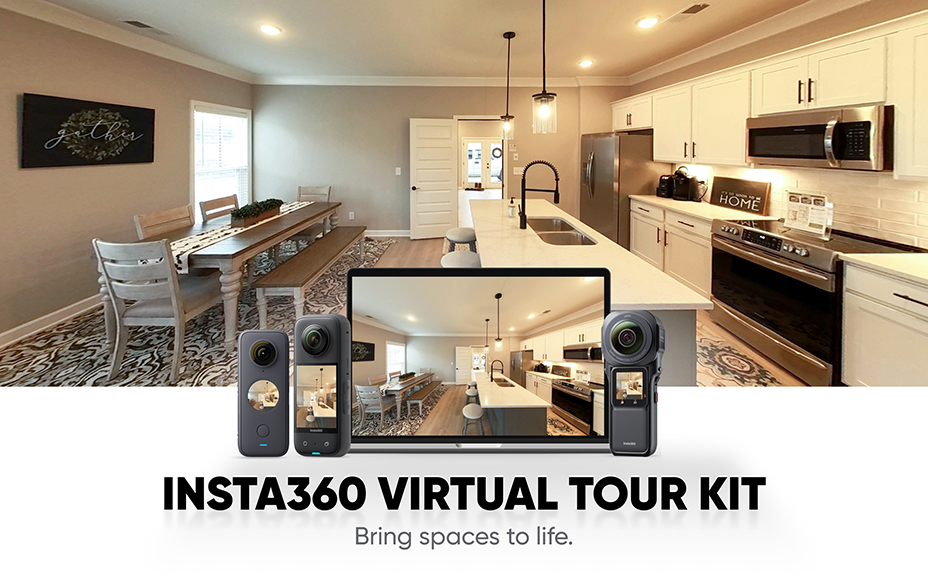
If you want an action cam that fits real estate virtual tour projects, the Insta360 ONE RS 1-Inch is one of my favorites.
The virtual Tour Kit includes the camera itself and a Mounting Bracket, a Vertical Battery Base, a Lens Cap, a 114cm Invisible Selfie Stick, an all-purpose Tripod, and a 64GB MicroSD card, giving you all the equipment you need to start creating virtual tours.
Videos are captured in up to 6k, giving you tons of detail and the ability to crop into footage digitally.
FlowState Stabilization means that you can hand hold the camera and walk around the property without any perceivable camera jitters to distract the viewer,
Another much-appreciated aspect is that it takes 21-megapixel 360 photos, giving you excellent quality for your real estate images as well as video.
Plus, you’ll like its low-light processing capabilities, thanks to its dual 1-inch sensors, which help your evening house images come to life.
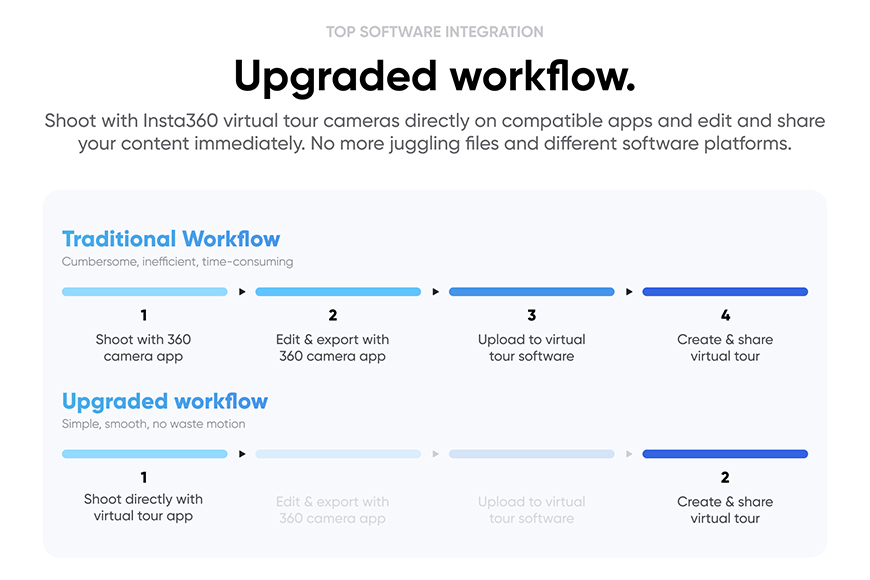
The ONE RS is compatible with all the top real estate virtual tour software, including Zillow, Matterport, Floorfy, Kuula, 3DVista, Cloudpano, GoThru, OpenSpace, DroneDeploy, and Structionsite.
You can shoot with the Insta360 ONE RS using one of the compatible virtual tour apps and edit and share your content immediately.
How to Choose the Right Virtual Tour Software
As a real estate agent venturing into photography, it might sound like a big deal to select software for a virtual tour.
But don’t fret; the market has loads of options with varying difficulty levels.
You’ll just have to think about these features to find the ideal virtual tour software:
- Compatibility with your equipment
- Type of virtual tour it’s made for
- Video editing tools (beginner-friendly, require some background, or expert use)
- Advanced features (branding, virtual staging, etc.)
4 Best Virtual Tour Apps for Real Estate
Here are my top three recommendations for a smooth virtual tour creation experience:
- Matterport: For maximum control over immersive 360-degree tours and 3D videos
- Asteroom: Offers real estate professionals smartphone compatibility and a user-friendly way to capture virtual tours
- EyeSpy360: A subscription-free program that supports branding and virtual staging
Zillow 3D Home app: Makes 3D tours using your phone only and shares them on Zillow (but not suitable for sharing anywhere else)
Step-By-Step Guide to Creating a Virtual Real Estate Tour
Now, let’s dive into the specifics of making a real estate virtual tour!
Step 1: Get Your Equipment Ready
Based on the type of virtual tour you intend to shoot, decide on the right software, camera, and other accessories.
If you’ll be using your phone, I suggest buying a fisheye lens adapter to help you get wide-angle shots.
You can invest in a full-fledged DSLR camera for a more professional approach, but it might cost you a small fortune. Don’t forget to purchase a rotating tripod for more stability while you shoot 360-degree views of your rooms.
Next, pair your camera with the ideal software from the earlier list. Remember that your choice also depends on your video editing knowledge and how much you want to be involved with the tour creation process.
Step 2: Plan Your Virtual Tour
Plan the shots by following a prospective buyer’s path when checking out the house.
Your route should be logical, starting from the front door, passing through each room, looking inside closets and bathrooms, etc.
You should also mark where you’ll place your camera to take 360-degree photos.
Ideally, it should be in the center of the room, but small spaces or long hallways will require other camera placements.
Step 3: Clean and Stage the Home in Preparation
A crucial part of preparing the house for your photoshoot is cleaning it thoroughly, especially if it’s still lived in.
Pay attention to windows, mirrors, and other reflective surfaces that indicate a home’s cleanliness.
Otherwise, potential buyers might be put off by any cluttered or dusty areas.
Plus, it’s a good idea to stage the home. Home staging means adding and arranging furniture pieces, accessories, or rugs to give each room an appealing look.
Step 4: Do Lighting and Camera Tests
Test your equipment and make any necessary adjustments.
Think about using natural vs. artificial lighting or a mix of both. Do you need extra equipment to illuminate darker rooms? Are some places too bright that you must adjust your camera settings accordingly?
Also, ensure you and the camera don’t appear on reflective surfaces!
Step 5: Take Your Pictures and Upload Them onto the Software
Lastly, start rolling, going from one room to the next until you’ve completed your planned shots.
Then, upload the photos onto the virtual tour software you’ve chosen. Follow the instructions for the specific program, and consider adding interactive links, narration, or text while editing.
Finish by adding the virtual tour to your property listing or sharing it with your clients.
How to Make a 360° (3D) Virtual Real Estate Tour with iPhone/Android
Here’s how you can achieve decent results by making a 360° virtual real estate tour with your smartphone.
Step 1: Use the Google Street View App
After following the instructions from earlier (planning your shots, doing tests, and home staging), download this app from the Play Store or App Store.
- Tap on the camera icon, select “Take Photo Sphere,” then point the camera to the orange dot.
- Take the first photo and repeat the same process until the green box appears.
- Click on the green box, then select the options to share or save your creation.
Step 2: Upload the 360-degree Images to Your Virtual Tour Software
In this step, you’ll use another mobile app to create your virtual tour called My360.
After signing up, create a new tour profile before clicking “+ Spheres.” You’ll then be prompted to upload the photos you’ve taken.
Wait until the upload is over before you close the app.
Step 3: Finish Creating the Tour Using the Desktop Version
I advise switching to the My360 desktop app to give you maximum control over your photo editing experience.
Once you type in your credentials, you’ll find the pictures you’ve uploaded from your smartphone that are waiting for you to use.
Finally, make your virtual reality tour, then attach it to your property listings.
5 Best Practices When Creating a Virtual Real Estate Tour
Want your virtual reality tour to look like it’s been shot by a professional? Consider these practices that promise incredible results!
1. Use a Shot List
Organization is key when you’re in the planning phase, which is why I suggest you make a shot checklist.
This list should involve every room the tour will cover, preferably chronologically.
For example, the first item could be “Exterior and front yard,” followed by “Front door,” followed by “Proch,” and so on, based on your vision.
2. Level Your Tripod
Ensure your tripod is level so the photos you capture don’t come out uneven.
Here, you may use a bubble level indicator, adjust the center column, or tweak the tripod leg height.
3. Take Test Shots
Test shots are essential, helping you make any corrections to your lights, level of detail, photo depth, and other factors.
They’re also time-efficient, reducing the time wasted if you encounter a problem while taking your final shots.
4. Consider Virtual Staging
Several websites (like iStaging) and virtual tour software services offer virtual staging.
This involves editing your panoramic photos to include furniture, accessories, and home decor. For busy real estate agents, this option can be a hassle-free alternative to traditional home staging.
5. Create Both Branded and Unbranded Versions of Your Tours
In digital marketing, branding is everything because it links everything to the business.
So, when posting on public websites, you should brand the tour with your details to leave a lasting effect on the viewers.
Unbranded versions work best in settings where you can’t use branded ones. This sometimes includes sites that promote your house showing.
FAQs About Creating a Virtual Real Estate Tour
What is a virtual tour camera?
A virtual tour camera has a 360-degree lens , capturing a wide view of each room to include all the details within the shot.
How do you make a good virtual tour?
You need suitable equipment, strong virtual tour software, careful planning, and a good understanding of how to show each property in its best light.
Usually, finding the right formula comes with experience.
How can I make a virtual tour for real estate for free?
You may use Google Street View and My360 to make virtual tours without spending money on equipment or software subscriptions.
Can I create a virtual tour for real estate online?
Unfortunately, an online service doesn’t allow you to make a virtual tour without downloading desktop or smartphone software.
How do I create an interactive virtual tour?
You’ll need an app that supports virtual reality, such as iStaging, Kuula, and CloudPano.
What is a branded virtual tour for real estate?
A branded virtual tour includes the real estate professional’s name, listing office, and contact information.

Check out these 8 essential tools to help you succeed as a professional photographer.
Includes limited-time discounts.
You'll Also Like These:

Jeff Collier is an experienced film photographer who enjoys experimenting with modern digital photography equipment, software and apps. He’s also an ex-world champion triathlete and avid cyclist, clocking hundreds of km each week in the beautiful Tweed Valley of northern NSW, Australia.
Leave a Comment Cancel Reply
👋 WELCOME TO SHOTKIT!

🔥 Popular NOW:

Unlock the EXACT blueprint to capture breathtaking iPhone photos!
Shotkit may earn a commission on affiliate links. Learn more.

IMAGES
VIDEO
COMMENTS
The Best Camera Deals This Week*. Sony Alpha A6600 Mirrorless Camera With 18-135mm Lens. Canon EOS R100 24.1 MP Mirrorless Camera. Sony Alpha a6400 Mirrorless Camera With 16-50mm Lens. Canon EOS ...
The 360 Cameras Most Suitable for Real Estate Virtual Tours (Updated April 2023): Best Quality: Insta360 1 Inch 360-Edition. 1 Inch Sensors | RAW Files | HDR auto Bracketing | High Resolution. Available from Insta360. Sharpest Images: Ricoh Theta X. 1/2 Inch Sensors | 60MP Photos | HDR auto Bracketing | Easy to Use.
Most virtual tours use 360-degree stills shot by a tripod-mounted camera. The best 360 cameras in 2021 can capture sharp, immersive images which are perfect for virtual tours.
Ricoh Theta X: A camera offering high resolution combined with excellent still-image capabilities, making it a strong contender for virtual tours. Resolutions: Video resolution not specified, high-resolution stills. Use Case: Choose this for high-quality images in your 360 tours.
The best 360 cameras feature automatic stitching, live-streaming, image-stabilization, 4k and 8k video resolution, slo-mo modes, Wi-Fi, GPS and more. You can use 360 cameras for selfies with multiple camera angles, for immersive real estate virtual tours, live-streaming an office meeting, or for skiing down the side of a mountain.
Reasons to avoid. The QooCam 8K is the best 360 camera right now for image quality. A massive (by 360 standards) 1/1.7-inch CMOS sensor, 10-bit color, and, of course, that 8K resolution make sure of that. When it comes to the quality of its photos and videos, the QooCam 8K is peerless in the 360º market.
Insta360 One RS 1-inch 360 Edition. 4. Best 360 camera for professionals. The Insta360 One RS 1-inch 360 edition is a more premium offering, co-engineered with Leica, but still maintaining ...
The One X2 is an incredibly impressive action camera that uses its 360-degree lenses for virtual tours as well as a variety of creative editing modes. It consistently produces stunning videos and photos. Although It requires time and dedication to understand, the One X2 is a must-have for content creators looking to explore other options.
10:14 XPhase S2 vs XPhase X2. 12:55 XPhase X2 problem. 15:00 DSLR or mirrorless camera for virtual tour. If you want to compare the photos side by side, you can do so with the 360 camera comparison tool. Compared to my virtual tour camera comparison last year, some 360 cameras are no longer available, such as the Ricoh Theta V.
The best 360 camera for virtual tours ... The back-illuminated 1-inch CMOS sensor produces minimal noise in low light conditions outside or in - perfect for virtual tours. The newly developed lens unit improves optical clarity, and with an aperture range from f/2.1-5.6, it's designed to reduce flare, chromatic aberration, and ghosting as well ...
The Best 360 Cameras of 2023. Here are the top 360 cameras of 2023, highlighting their features, capabilities, and how they can benefit virtual tour creators: 1. Insta360 ONE X2. Key Features: 5.7K video resolution. FlowState stabilization. HDR mode. Invisible selfie stick feature.
As of February 2019, the best virtual tour cameras for photo quality are: - DSLR for absolute best image quality. - Aleta S2C for a compromise between image quality and ease of use (1 meter minimum stitching distance) - Among consumer 360 cameras, Insta360 One X in HDR mode has the best dynamic range, while Xiaomi Mi Sphere still has the ...
Choosing the best cameras for 360 virtual tours, different lens for cameras, camera functions, uses and software compatibility with cameras. Partner With Us. ... When considering cameras for virtual tours, prioritize those equipped with a wide-angle lens or a fisheye lens.
Discover the significance of camera quality in virtual tour creation and find the best consumer-level 360-degree cameras for your needs. Compare top cameras like Insta360 ONE X2, Ricoh Theta Z1, and GoPro MAX based on image quality, affordability, and durability. Learn how to integrate your chosen camera with Cloudpano for seamless virtual tour creation.
Here's a curated list of exceptional 360 cameras suited for real estate photography, ordered by price range: 1. Samsung Gear 360: A great entry-level option for newcomers to 360 photography. Compatible with various devices, it captures in 4K quality and offers affordability, with prices ranging from $150 to $229. 2.
Virtual tours are more popular than ever, with an increasing number of 360 shooters seeking to shoot virtual tours, and many platforms adding virtual tour features. In this post, I will discuss my recommendation for the best camera for virtual tours, with supporting evidence, based on my experience as a photographer since 2007, and my experience […]
4. Pergear Trisio Lite 2 8K Virtual Tour Camera. Pergear manufactures one of the most affordable and underappreciated 360 cameras available in the market. Based on numerous reviews, their Trisio Lite 2 camera is acclaimed as the top-notch professional 360 degree camera for conducting real estate virtual tours.
The 3 Best 360 Cameras For Virtual Tours. Below is our guide on the top three cameras for creating a virtual house tour. Build A Free Tour. Simple, Fast, Affordable. 3D Virtual House Tours. Join the #1 real estate photographer business platform today and build your first 3D house tour for free.
Best Affordable 360° Camera: The Ricoh Theta SC2. Cost: $296.95. Best for: All listings. The Ricoh Theta series has become the new industry standard for real estate virtual tours. At less than $300, the Theta SC2 offers significant savings over the $3,395 Matterport camera and other 360° cameras like the Insta360.
It is best virtual tour software. You can have live video chat on your virtual tour. CloudPano is the best 360 tour software. CloudPano is a alternative to Kuula. CloudPano is better than EyeSpy360. You can use any 360 camera to create VR-friendly tours. CloudPano is the best matterport alternative.
4.5. Ricoh Theta SC2 is a 360-degree camera that records 4K movies, high-quality images, and high-resolution videos. It can be used in various scenes to capture the world around you. You can also enjoy an immersive viewing experience of your recorded media on the smartphone application "Theta+".
Leave a Comment / By mdmohsan / September 19, 2023. The best tripod for 360 Virtual Tours is the Manfrotto MT190XPRO4 Aluminum 4-Section Tripod. It is lightweight, sturdy and very versatile. It has an adjustable center column that can be used to achieve different angles with great precision. The legs are four sectioned and extendable with flip ...
How to Choose the Best Camera for Virtual Real Estate Tours. Virtual real estate tour cameras must capture the finest interior space details. On the upside, the market is teeming with cameras designed for this purpose. However, it can be confusing for real estate agents to find the perfect one for their needs. So, consider the following to make ...